Transcript: Read the Speech Pope Francis Gave to Congress
Pope Francis addressed a joint meeting of Congress in a historic speech Thursday morning.
Here’s a full transcript of his remarks.
I am most grateful for your invitation to address this Joint Session of Congress in “the land of the free and the home of the brave”. I would like to think that the reason for this is that I too am a son of this great continent, from which we have all received so much and toward which we share a common responsibility. Each son or daughter of a given country has a mission, a personal and social responsibility. Your own responsibility as members of Congress is to enable this country, by your legislative activity, to grow as a nation. You are the face of its people, their representatives. You are called to defend and preserve the dignity of your fellow citizens in the tireless and demanding pursuit of the common good, for this is the chief aim of all politics. A political society endures when it seeks, as a vocation, to satisfy common needs by stimulating the growth of all its members, especially those in situations of greater vulnerability or risk. Legislative activity is always based on care for the people. To this you have been invited, called and convened by those who elected you. Yours is a work which makes me reflect in two ways on the figure of Moses. On the one hand, the patriarch and lawgiver of the people of Israel symbolizes the need of peoples to keep alive their sense of unity by means of just legislation. On the other, the figure of Moses leads us directly to God and thus to the transcendent dignity of the human being. Moses provides us with a good synthesis of your work: you are asked to protect, by means of the law, the image and likeness fashioned by God on every human face. Today I would like not only to address you, but through you the entire people of the United States. Here, together with their representatives, I would like to take this opportunity to dialogue with the many thousands of men and women who strive each day to do an honest day’s work, to bring home their daily bread, to save money and – one step at a time – to build a better life for their families. These are men and women who are not concerned simply with paying their taxes, but in their own quiet way sustain the life of society. They generate solidarity by their actions, and they create organizations which offer a helping hand to those most in need.

Selfies of People Celebrating Pope Francis's Journey Across the U.S.

I would also like to enter into dialogue with the many elderly persons who are a storehouse of wisdom forged by experience, and who seek in many ways, especially through volunteer work, to share their stories and their insights. I know that many of them are retired, but still active; they keep working to build up this land. I also want to dialogue with all those young people who are working to realize their great and noble aspirations, who are not led astray by facile proposals, and who face difficult situations, often as a result of immaturity on the part of many adults. I wish to dialogue with all of you, and I would like to do so through the historical memory of your people. My visit takes place at a time when men and women of good will are marking the anniversaries of several great Americans. The complexities of history and the reality of human weakness notwithstanding, these men and women, for all their many differences and limitations, were able by hard work and self- sacrifice – some at the cost of their lives – to build a better future. They shaped fundamental values which will endure forever in the spirit of the American people. A people with this spirit can live through many crises, tensions and conflicts, while always finding the resources to move forward, and to do so with dignity. These men and women offer us a way of seeing and interpreting reality. In honoring their memory, we are inspired, even amid conflicts, and in the here and now of each day, to draw upon our deepest cultural reserves. I would like to mention four of these Americans: Abraham Lincoln, Martin Luther King, Dorothy Day and Thomas Merton. This year marks the one hundred and fiftieth anniversary of the assassination of President Abraham Lincoln, the guardian of liberty, who labored tirelessly that “this nation, under God, [might] have a new birth of freedom”. Building a future of freedom requires love of the common good and cooperation in a spirit of subsidiarity and solidarity. All of us are quite aware of, and deeply worried by, the disturbing social and political situation of the world today. Our world is increasingly a place of violent conflict, hatred and brutal atrocities, committed even in the name of God and of religion. We know that no religion is immune from forms of individual delusion or ideological extremism. This means that we must be especially attentive to every type of fundamentalism, whether religious or of any other kind. A delicate balance is required to combat violence perpetrated in the name of a religion, an ideology or an economic system, while also safeguarding religious freedom, intellectual freedom and individual freedoms. But there is another temptation which we must especially guard against: the simplistic reductionism which sees only good or evil; or, if you will, the righteous and sinners. The contemporary world, with its open wounds which affect so many of our brothers and sisters, demands that we confront every form of polarization which would divide it into these two camps. We know that in the attempt to be freed of the enemy without, we can be tempted to feed the enemy within. To imitate the hatred and violence of tyrants and murderers is the best way to take their place. That is something which you, as a people, reject. Our response must instead be one of hope and healing, of peace and justice. We are asked to summon the courage and the intelligence to resolve today’s many geopolitical and economic crises. Even in the developed world, the effects of unjust structures and actions are all too apparent. Our efforts must aim at restoring hope, righting wrongs, maintaining commitments, and thus promoting the well-being of individuals and of peoples. We must move forward together, as one, in a renewed spirit of fraternity and solidarity, cooperating generously for the common good. The challenges facing us today call for a renewal of that spirit of cooperation, which has accomplished so much good throughout the history of the United States. The complexity, the gravity and the urgency of these challenges demand that we pool our resources and talents, and resolve to support one another, with respect for our differences and our convictions of conscience. In this land, the various religious denominations have greatly contributed to building and strengthening society. It is important that today, as in the past, the voice of faith continue to be heard, for it is a voice of fraternity and love, which tries to bring out the best in each person and in each society. Such cooperation is a powerful resource in the battle to eliminate new global forms of slavery, born of grave injustices which can be overcome only through new policies and new forms of social consensus.
See Photos of Every Papal Visit to the U.S. in History
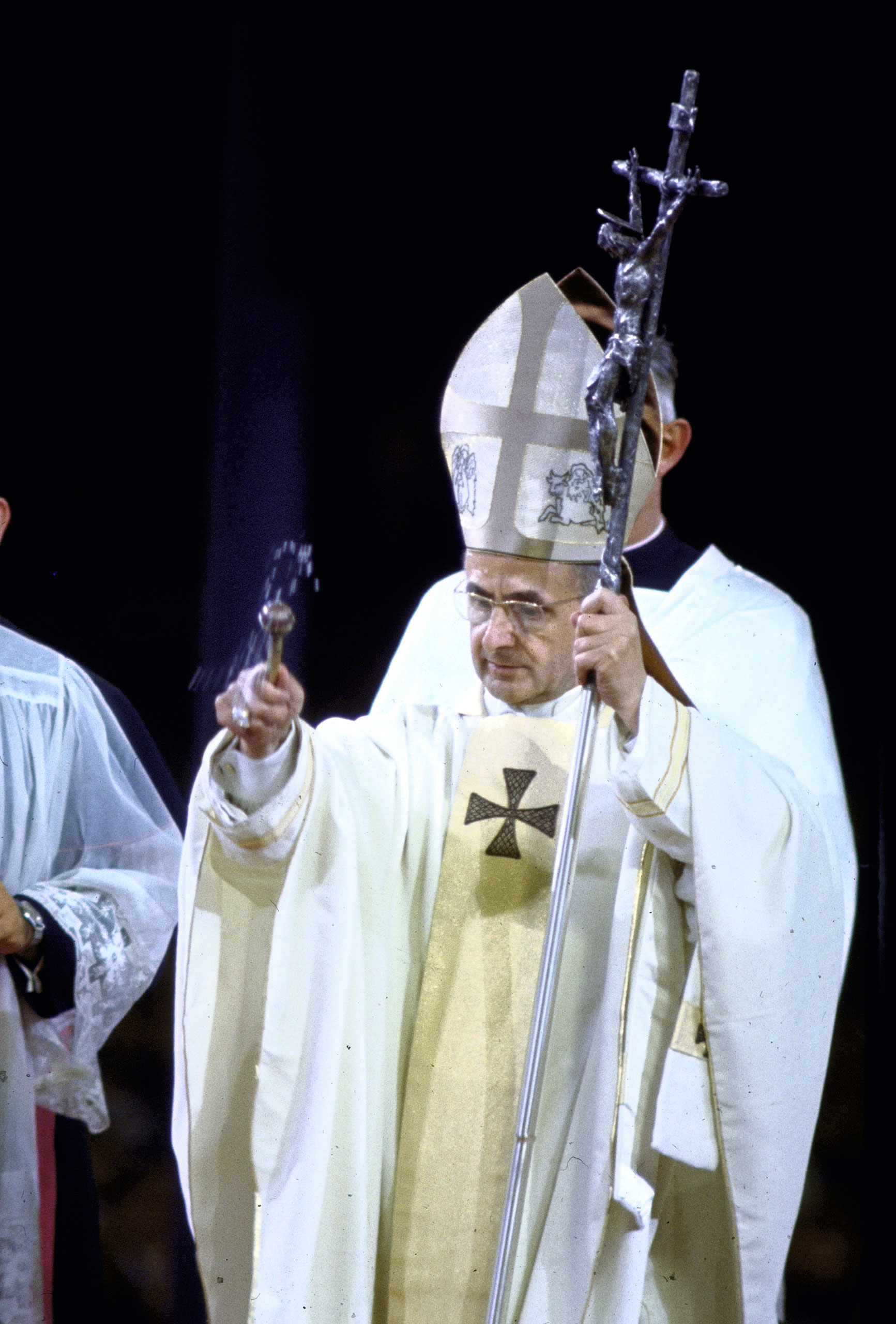
[ Editor’s Note: The following section, which was in the prepared remarks, was not included in the speech .] Here I think of the political history of the United States, where democracy is deeply rooted in the mind of the American people. All political activity must serve and promote the good of the human person and be based on respect for his or her dignity. “We hold these truths to be self-evident, that all men are created equal, that they are endowed by their Creator with certain unalienable rights, that among these are life, liberty and the pursuit of happiness” (Declaration of Independence, 4 July 1776). If politics must truly be at the service of the human person, it follows that it cannot be a slave to the economy and finance. Politics is, instead, an expression of our compelling need to live as one, in order to build as one the greatest common good: that of a community which sacrifices particular interests in order to share, in justice and peace, its goods, its interests, its social life. I do not underestimate the difficulty that this involves, but I encourage you in this effort.Here too I think of the march which Martin Luther King led from Selma to Montgomery fifty years ago as part of the campaign to fulfill his “dream” of full civil and political rights for African Americans. That dream continues to inspire us all. I am happy that America continues to be, for many, a land of “dreams”. Dreams which lead to action, to participation, to commitment. Dreams which awaken what is deepest and truest in the life of a people. In recent centuries, millions of people came to this land to pursue their dream of building a future in freedom. We, the people of this continent, are not fearful of foreigners, because most of us were once foreigners. I say this to you as the son of immigrants, knowing that so many of you are also descended from immigrants. Tragically, the rights of those who were here long before us were not always respected. For those peoples and their nations, from the heart of American democracy, I wish to reaffirm my highest esteem and appreciation. Those first contacts were often turbulent and violent, but it is difficult to judge the past by the criteria of the present. Nonetheless, when the stranger in our midst appeals to us, we must not repeat the sins and the errors of the past. We must resolve now to live as nobly and as justly as possible, as we educate new generations not to turn their back on our “neighbors” and everything around us. Building a nation calls us to recognize that we must constantly relate to others, rejecting a mindset of hostility in order to adopt one of reciprocal subsidiarity, in a constant effort to do our best. I am confident that we can do this. Our world is facing a refugee crisis of a magnitude not seen since the Second World War. This presents us with great challenges and many hard decisions. On this continent, too, thousands of persons are led to travel north in search of a better life for themselves and for their loved ones, in search of greater opportunities. Is this not what we want for our own children? We must not be taken aback by their numbers, but rather view them as persons, seeing their faces and listening to their stories, trying to respond as best we can to their situation. To respond in a way which is always humane, just and fraternal. We need to avoid a common temptation nowadays: to discard whatever proves troublesome. Let us remember the Golden Rule: “Do unto others as you would have them do unto you” (Mt 7:12). This Rule points us in a clear direction. Let us treat others with the same passion and compassion with which we want to be treated. Let us seek for others the same possibilities which we seek for ourselves. Let us help others to grow, as we would like to be helped ourselves. In a word, if we want security, let us give security; if we want life, let us give life; if we want opportunities, let us provide opportunities. The yardstick we use for others will be the yardstick which time will use for us. The Golden Rule also reminds us of our responsibility to protect and defend human life at every stage of its development. This conviction has led me, from the beginning of my ministry, to advocate at different levels for the global abolition of the death penalty. I am convinced that this way is the best, since every life is sacred, every human person is endowed with an inalienable dignity, and society can only benefit from the rehabilitation of those convicted of crimes. Recently my brother bishops here in the United States renewed their call for the abolition of the death penalty. Not only do I support them, but I also offer encouragement to all those who are convinced that a just and necessary punishment must never exclude the dimension of hope and the goal of rehabilitation. In these times when social concerns are so important, I cannot fail to mention the Servant of God Dorothy Day, who founded the Catholic Worker Movement. Her social activism, her passion for justice and for the cause of the oppressed, were inspired by the Gospel, her faith, and the example of the saints. How much progress has been made in this area in so many parts of the world! How much has been done in these first years of the third millennium to raise people out of extreme poverty! I know that you share my conviction that much more still needs to be done, and that in times of crisis and economic hardship a spirit of global solidarity must not be lost. At the same time I would encourage you to keep in mind all those people around us who are trapped in a cycle of poverty. They too need to be given hope. The fight against poverty and hunger must be fought constantly and on many fronts, especially in its causes. I know that many Americans today, as in the past, are working to deal with this problem. It goes without saying that part of this great effort is the creation and distribution of wealth. The right use of natural resources, the proper application of technology and the harnessing of the spirit of enterprise are essential elements of an economy which seeks to be modern, inclusive and sustainable. “Business is a noble vocation, directed to producing wealth and improving the world. It can be a fruitful source of prosperity for the area in which it operates, especially if it sees the creation of jobs as an essential part of its service to the common good” (Laudato Si’, 129). This common good also includes the earth, a central theme of the encyclical which I recently wrote in order to “enter into dialogue with all people about our common home” (ibid., 3). “We need a conversation which includes everyone, since the environmental challenge we are undergoing, and its human roots, concern and affect us all” (ibid., 14). In Laudato Si’, I call for a courageous and responsible effort to “redirect our steps” (ibid., 61), and to avert the most serious effects of the environmental deterioration caused by human activity. I am convinced that we can make a difference and I have no doubt that the United States – and this Congress – have an important role to play. Now is the time for courageous actions and strategies, aimed at implementing a “culture of care” (ibid., 231) and “an integrated approach to combating poverty, restoring dignity to the excluded, and at the same time protecting nature” (ibid., 139). “We have the freedom needed to limit and direct technology” (ibid., 112); “to devise intelligent ways of… developing and limiting our power” (ibid., 78); and to put technology “at the service of another type of progress, one which is healthier, more human, more social, more integral” (ibid., 112). In this regard, I am confident that America’s outstanding academic and research institutions can make a vital contribution in the years ahead.
Here Are the Best Instagram Photos of Pope Francis’ Visit

A century ago, at the beginning of the Great War, which Pope Benedict XV termed a “pointless slaughter”, another notable American was born: the Cistercian monk Thomas Merton. He remains a source of spiritual inspiration and a guide for many people. In his autobiography he wrote: “I came into the world. Free by nature, in the image of God, I was nevertheless the prisoner of my own violence and my own selfishness, in the image of the world into which I was born. That world was the picture of Hell, full of men like myself, loving God, and yet hating him; born to love him, living instead in fear of hopeless self-contradictory hungers”. Merton was above all a man of prayer, a thinker who challenged the certitudes of his time and opened new horizons for souls and for the Church. He was also a man of dialogue, a promoter of peace between peoples and religions. From this perspective of dialogue, I would like to recognize the efforts made in recent months to help overcome historic differences linked to painful episodes of the past. It is my duty to build bridges and to help all men and women, in any way possible, to do the same. When countries which have been at odds resume the path of dialogue – a dialogue which may have been interrupted for the most legitimate of reasons – new opportunities open up for all. This has required, and requires, courage and daring, which is not the same as irresponsibility. A good political leader is one who, with the interests of all in mind, seizes the moment in a spirit of openness and pragmatism. A good political leader always opts to initiate processes rather than possessing spaces (cf. Evangelii Gaudium, 222-223). Being at the service of dialogue and peace also means being truly determined to minimize and, in the long term, to end the many armed conflicts throughout our world. Here we have to ask ourselves: Why are deadly weapons being sold to those who plan to inflict untold suffering on individuals and society? Sadly, the answer, as we all know, is simply for money: money that is drenched in blood, often innocent blood. In the face of this shameful and culpable silence, it is our duty to confront the problem and to stop the arms trade. Three sons and a daughter of this land, four individuals and four dreams: Lincoln, liberty; Martin Luther King, liberty in plurality and non-exclusion; Dorothy Day, social justice and the rights of persons; and Thomas Merton, the capacity for dialogue and openness to God. Four representatives of the American people. I will end my visit to your country in Philadelphia, where I will take part in the World Meeting of Families. It is my wish that throughout my visit the family should be a recurrent theme. How essential the family has been to the building of this country! And how worthy it remains of our support and encouragement! Yet I cannot hide my concern for the family, which is threatened, perhaps as never before, from within and without. Fundamental relationships are being called into question, as is the very basis of marriage and the family. I can only reiterate the importance and, above all, the richness and the beauty of family life. In particular, I would like to call attention to those family members who are the most vulnerable, the young. For many of them, a future filled with countless possibilities beckons, yet so many others seem disoriented and aimless, trapped in a hopeless maze of violence, abuse and despair. Their problems are our problems. We cannot avoid them. We need to face them together, to talk about them and to seek effective solutions rather than getting bogged down in discussions. At the risk of oversimplifying, we might say that we live in a culture which pressures young people not to start a family, because they lack possibilities for the future. Yet this same culture presents others with so many options that they too are dissuaded from starting a family. A nation can be considered great when it defends liberty as Lincoln did, when it fosters a culture which enables people to “dream” of full rights for all their brothers and sisters, as Martin Luther King sought to do; when it strives for justice and the cause of the oppressed, as Dorothy Day did by her tireless work, the fruit of a faith which becomes dialogue and sows peace in the contemplative style of Thomas Merton. In these remarks I have sought to present some of the richness of your cultural heritage, of the spirit of the American people. It is my desire that this spirit continue to develop and grow, so that as many young people as possible can inherit and dwell in a land which has inspired so many people to dream. God bless America!
See Photos of Pope Francis’ Historic Visit to U.S.

More Must-Reads from TIME
- How Joe Biden Leads
- Lai Ching-te Is Standing His Ground
- Do Less. It’s Good for You
- There's Something Different About Will Smith
- What Animal Studies Are Revealing About Their Minds—and Ours
- What a Hospice Nurse Wants You to Know About Death
- 15 LGBTQ+ Books to Read for Pride
- Want Weekly Recs on What to Watch, Read, and More? Sign Up for Worth Your Time
Contact us at [email protected]
- Asia - Pacific
- Middle East - Africa
- Apologetics
- Benedict XVI
- Catholic Links
- Church Fathers
- Life & Family
- Liturgical Calendar
- Pope Francis
- CNA Newsletter
- Editors Service About Us Advertise Privacy

It's official! Pope Francis announces 2015 visit to US
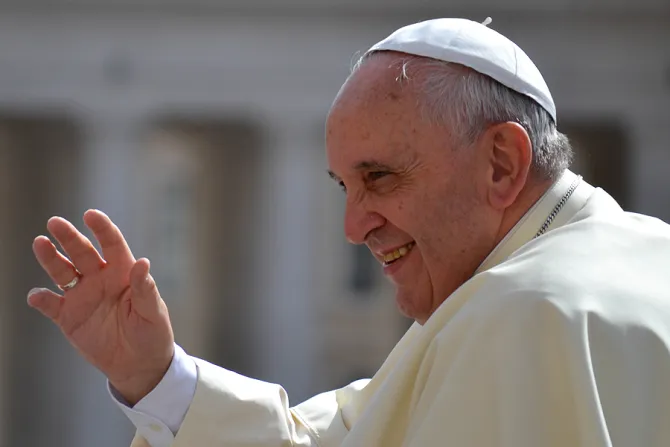
Vatican City, Nov 17, 2014 / 01:11 am
Updated November 17, 2014 at 6:25a.m. MST. Adds comments from Vatican spokesman Fr. Federico Lombardi SJ at paragraphs 9-10.
Pope Francis on Monday officially announced that he will visit the U.S. in September 2015, including a visit to the World Meeting of Families in Philadelphia. "I wish to confirm, if God wills it, that in September of 2015 I will go to Philadelphia for the Eighth World Meeting of Families," he announced at Vatican City's Synod Hall Nov. 17 during his remarks at an international colloquium on the complementarity of man and woman. The Philadelphia World Meeting of Families will take place from Sept. 22-27. Even before the Pope's announcement, the meeting was expected to draw tens of thousands of people. Archbishop Charles J. Chaput of Philadelphia had told a gathering of Catholic bishops last week that a papal visit would likely result in crowds of about 1 million. A global Catholic event, the world meeting seeks to support and strengthen families. St. John Paul II founded the event in 1994, and it takes place every three years. Archbishop Chaput had previously hinted that Pope Francis would attend the 2015 meeting, although he cautioned that the visit had not been officially confirmed. In March 2014, a Pennsylvania delegation including Pennsylvania Gov. Tom Corbett and Philadelphia mayor Michael Nutter visited the Vatican to help encourage the Pope to visit the U.S. On Thursday, Archbishop Bernardito Auza, the head of the Holy See's permanent observer mission to the United Nations, told the Associated Press "if he comes to Philadelphia, he will come to New York." The 70th anniversary of the U.N.'s founding would be "the ideal time" for a papal visit, the archbishop said Nov. 13. Next year also marks the 50th anniversary of Pope Paul VI's 1965 visit to the U.N., the first such visit from a Pope. In August, on his return flight from South Korea, Pope Francis said he wanted to visit the U.S. in 2015 for the Philadelphia gathering. He also noted that he had received invitations from President Barack Obama, Congress and U.N. Secretary-General Ban Ki Moon, as well as from Mexico.
However, despite the anticipation of the Pope's possible visit to New York and Washington while in the U.S., Vatican spokesman Fr. Federico Lombardi S.J. told journalists shortly after the announcement that as of now nothing else is confirmed.
The Pope, he explained, "didn't say anything about any other steps or moments in his trip to America. He guaranteed his presence to the organizers of the World Day for Families, but as for the rest, I have no concrete information."
Pope Francis has visited the Holy Land and Albania as well as South Korea. He will visit France and Turkey in November, and Sri Lanka and the Philippines in January 2015. He will return to France for a longer visit in 2015. In June, the Pope accepted an invitation to visit Mexico, though a date for the visit was not announced. The World Meeting of Families will take place shortly before the October 2015 meeting of the Synod of Bishops on the Family, which will discuss the mission of the family in the Church and in the world. At the last World Meeting of Families in Milan, Italy, in 2012, more than 1 million people representing 153 nations attended a papal Mass with Pope Benedict XVI. The 2015 meeting's theme is "Love is Our Mission: The Family Fully Alive." The meeting will include many speakers and breakout sessions. Keynote speakers include Cardinal Sean O'Malley of Boston, Cardinal Luis Antonio Tagle of the Philippines, Cardinal Robert Sarah, professor Helen Alvare, and Dr. Juan Francisco de la Guardia Brin and Gabriela N. de la Guardia. The Philadelphia meeting will mark the first time that the event will be held in the United States. Registration for the 2015 World Meeting of Families began on Nov. 10. The World Meeting of Families website is www.worldmeeting2015.org . It is on Facebook at https://www.facebook.com/WorldMeeting2015 and on Twitter at https://twitter.com/WMF2015 .
- United States ,
- Pope Francis ,
- Philadelphia
Subscribe to our daily newsletter
Our mission is the truth. join us.
Your monthly donation will help our team continue reporting the truth, with fairness, integrity, and fidelity to Jesus Christ and his Church.
The New York Times
Live coverage | the first and the most recent papal visits to the white house, highlights of pope francis’ visit to the united states.
The New York Times September 23, 2015 September 23, 2015
A Whirlwind Papal Journey Concludes
- The crowded agenda of the Pope’s first visit to the United States ended in Philadelphia, where he met with victims of sexual abuse, spoke to inmates and celebrated a Mass in the heart of the city.
- Sunday culminated a six-day, three-city tour , where, in his public appearances, he continued to call for unity and underscore the importance of family.
- While hundreds of thousands of people were moved by the opportunity to pray with the pope, he left America with a blessing and his signature request: “Pray for me.”
The First and the Most Recent Papal Visits to the White House

In October 1979, Pope John Paul II went where no leader of the Roman Catholic Church had ever gone before: into the White House . Some of Washington’s most powerful figures, from members of Congress to the justices of the Supreme Court, gathered on the North Lawn to mark his arrival. Inside the White House, John Paul discussed the second Strategic Arms Limitation Treaty with President Jimmy Carter and met the first family. The visit, which marked the last stop on a whirlwind U.S. tour for the pontiff, was only the second time a pope and a president had met on American soil.

The most recent time a pope visited Washington, he was celebrating his birthday . President George W. Bush had invited the newly 81-year-old Benedict XVI to the White House, where he was greeted on the South Lawn on a bright blue April morning in 2008 by a crowd of 13,500 people. The soprano Kathleen Battle sang the Lord’s Prayer, followed by two rounds of “Happy Birthday.” The White House pastry chef even presented Benedict with a birthday cake.
APOSTOLIC JOURNEY OF HIS HOLINESS POPE FRANCIS TO CUBA, TO THE UNITED STATES OF AMERICA AND VISIT TO THE UNITED NATIONS HEADQUARTERS (19-28 SEPTEMBER 2015)
VISIT TO THE JOINT SESSION OF THE UNITED STATES CONGRESS
ADDRESS OF THE HOLY FATHER
United States Capitol, Washington, D.C. Thursday, 24 September 2015
[ Multimedia ]
Mr. Vice-President, Mr. Speaker, Honorable Members of Congress, Dear Friends,
I am most grateful for your invitation to address this Joint Session of Congress in “the land of the free and the home of the brave”. I would like to think that the reason for this is that I too am a son of this great continent, from which we have all received so much and toward which we share a common responsibility.
Each son or daughter of a given country has a mission, a personal and social responsibility. Your own responsibility as members of Congress is to enable this country, by your legislative activity, to grow as a nation. You are the face of its people, their representatives. You are called to defend and preserve the dignity of your fellow citizens in the tireless and demanding pursuit of the common good, for this is the chief aim of all politics. A political society endures when it seeks, as a vocation, to satisfy common needs by stimulating the growth of all its members, especially those in situations of greater vulnerability or risk. Legislative activity is always based on care for the people. To this you have been invited, called and convened by those who elected you.
Yours is a work which makes me reflect in two ways on the figure of Moses. On the one hand, the patriarch and lawgiver of the people of Israel symbolizes the need of peoples to keep alive their sense of unity by means of just legislation. On the other, the figure of Moses leads us directly to God and thus to the transcendent dignity of the human being. Moses provides us with a good synthesis of your work: you are asked to protect, by means of the law, the image and likeness fashioned by God on every human face.
Today I would like not only to address you, but through you the entire people of the United States. Here, together with their representatives, I would like to take this opportunity to dialogue with the many thousands of men and women who strive each day to do an honest day’s work, to bring home their daily bread, to save money and –one step at a time – to build a better life for their families. These are men and women who are not concerned simply with paying their taxes, but in their own quiet way sustain the life of society. They generate solidarity by their actions, and they create organizations which offer a helping hand to those most in need.
I would also like to enter into dialogue with the many elderly persons who are a storehouse of wisdom forged by experience, and who seek in many ways, especially through volunteer work, to share their stories and their insights. I know that many of them are retired, but still active; they keep working to build up this land. I also want to dialogue with all those young people who are working to realize their great and noble aspirations, who are not led astray by facile proposals, and who face difficult situations, often as a result of immaturity on the part of many adults. I wish to dialogue with all of you, and I would like to do so through the historical memory of your people.
My visit takes place at a time when men and women of good will are marking the anniversaries of several great Americans. The complexities of history and the reality of human weakness notwithstanding, these men and women, for all their many differences and limitations, were able by hard work and self-sacrifice – some at the cost of their lives – to build a better future. They shaped fundamental values which will endure forever in the spirit of the American people. A people with this spirit can live through many crises, tensions and conflicts, while always finding the resources to move forward, and to do so with dignity. These men and women offer us a way of seeing and interpreting reality. In honoring their memory, we are inspired, even amid conflicts, and in the here and now of each day, to draw upon our deepest cultural reserves.
I would like to mention four of these Americans: Abraham Lincoln, Martin Luther King, Dorothy Day and Thomas Merton.
This year marks the one hundred and fiftieth anniversary of the assassination of President Abraham Lincoln, the guardian of liberty, who labored tirelessly that “this nation, under God, [might] have a new birth of freedom”. Building a future of freedom requires love of the common good and cooperation in a spirit of subsidiarity and solidarity.
All of us are quite aware of, and deeply worried by, the disturbing social and political situation of the world today. Our world is increasingly a place of violent conflict, hatred and brutal atrocities, committed even in the name of God and of religion. We know that no religion is immune from forms of individual delusion or ideological extremism. This means that we must be especially attentive to every type of fundamentalism, whether religious or of any other kind. A delicate balance is required to combat violence perpetrated in the name of a religion, an ideology or an economic system, while also safeguarding religious freedom, intellectual freedom and individual freedoms. But there is another temptation which we must especially guard against: the simplistic reductionism which sees only good or evil; or, if you will, the righteous and sinners. The contemporary world, with its open wounds which affect so many of our brothers and sisters, demands that we confront every form of polarization which would divide it into these two camps. We know that in the attempt to be freed of the enemy without, we can be tempted to feed the enemy within. To imitate the hatred and violence of tyrants and murderers is the best way to take their place. That is something which you, as a people, reject.
Our response must instead be one of hope and healing, of peace and justice. We are asked to summon the courage and the intelligence to resolve today’s many geopolitical and economic crises. Even in the developed world, the effects of unjust structures and actions are all too apparent. Our efforts must aim at restoring hope, righting wrongs, maintaining commitments, and thus promoting the well-being of individuals and of peoples. We must move forward together, as one, in a renewed spirit of fraternity and solidarity, cooperating generously for the common good.
The challenges facing us today call for a renewal of that spirit of cooperation, which has accomplished so much good throughout the history of the United States. The complexity, the gravity and the urgency of these challenges demand that we pool our resources and talents, and resolve to support one another, with respect for our differences and our convictions of conscience.
In this land, the various religious denominations have greatly contributed to building and strengthening society. It is important that today, as in the past, the voice of faith continue to be heard, for it is a voice of fraternity and love, which tries to bring out the best in each person and in each society. Such cooperation is a powerful resource in the battle to eliminate new global forms of slavery, born of grave injustices which can be overcome only through new policies and new forms of social consensus.
Here I think of the political history of the United States, where democracy is deeply rooted in the mind of the American people. All political activity must serve and promote the good of the human person and be based on respect for his or her dignity. “We hold these truths to be self-evident, that all men are created equal, that they are endowed by their Creator with certain unalienable rights, that among these are life, liberty and the pursuit of happiness” ( Declaration of Independence , 4 July 1776). If politics must truly be at the service of the human person, it follows that it cannot be a slave to the economy and finance. Politics is, instead, an expression of our compelling need to live as one, in order to build as one the greatest common good: that of a community which sacrifices particular interests in order to share, in justice and peace, its goods, its interests, its social life. I do not underestimate the difficulty that this involves, but I encourage you in this effort.
Here too I think of the march which Martin Luther King led from Selma to Montgomery fifty years ago as part of the campaign to fulfill his “dream” of full civil and political rights for African Americans. That dream continues to inspire us all. I am happy that America continues to be, for many, a land of “dreams”. Dreams which lead to action, to participation, to commitment. Dreams which awaken what is deepest and truest in the life of a people.
In recent centuries, millions of people came to this land to pursue their dream of building a future in freedom. We, the people of this continent, are not fearful of foreigners, because most of us were once foreigners. I say this to you as the son of immigrants, knowing that so many of you are also descended from immigrants. Tragically, the rights of those who were here long before us were not always respected. For those peoples and their nations, from the heart of American democracy, I wish to reaffirm my highest esteem and appreciation. Those first contacts were often turbulent and violent, but it is difficult to judge the past by the criteria of the present. Nonetheless, when the stranger in our midst appeals to us, we must not repeat the sins and the errors of the past. We must resolve now to live as nobly and as justly as possible, as we educate new generations not to turn their back on our “neighbors” and everything around us. Building a nation calls us to recognize that we must constantly relate to others, rejecting a mindset of hostility in order to adopt one of reciprocal subsidiarity, in a constant effort to do our best. I am confident that we can do this.
Our world is facing a refugee crisis of a magnitude not seen since the Second World War. This presents us with great challenges and many hard decisions. On this continent, too, thousands of persons are led to travel north in search of a better life for themselves and for their loved ones, in search of greater opportunities. Is this not what we want for our own children? We must not be taken aback by their numbers, but rather view them as persons, seeing their faces and listening to their stories, trying to respond as best we can to their situation. To respond in a way which is always humane, just and fraternal. We need to avoid a common temptation nowadays: to discard whatever proves troublesome. Let us remember the Golden Rule: “Do unto others as you would have them do unto you” ( Mt 7:12).
This Rule points us in a clear direction. Let us treat others with the same passion and compassion with which we want to be treated. Let us seek for others the same possibilities which we seek for ourselves. Let us help others to grow, as we would like to be helped ourselves. In a word, if we want security, let us give security; if we want life, let us give life; if we want opportunities, let us provide opportunities. The yardstick we use for others will be the yardstick which time will use for us. The Golden Rule also reminds us of our responsibility to protect and defend human life at every stage of its development.
This conviction has led me, from the beginning of my ministry, to advocate at different levels for the global abolition of the death penalty. I am convinced that this way is the best, since every life is sacred, every human person is endowed with an inalienable dignity, and society can only benefit from the rehabilitation of those convicted of crimes. Recently my brother bishops here in the United States renewed their call for the abolition of the death penalty. Not only do I support them, but I also offer encouragement to all those who are convinced that a just and necessary punishment must never exclude the dimension of hope and the goal of rehabilitation.
In these times when social concerns are so important, I cannot fail to mention the Servant of God Dorothy Day, who founded the Catholic Worker Movement . Her social activism, her passion for justice and for the cause of the oppressed, were inspired by the Gospel, her faith, and the example of the saints.
How much progress has been made in this area in so many parts of the world! How much has been done in these first years of the third millennium to raise people out of extreme poverty! I know that you share my conviction that much more still needs to be done, and that in times of crisis and economic hardship a spirit of global solidarity must not be lost. At the same time I would encourage you to keep in mind all those people around us who are trapped in a cycle of poverty. They too need to be given hope. The fight against poverty and hunger must be fought constantly and on many fronts, especially in its causes. I know that many Americans today, as in the past, are working to deal with this problem.
It goes without saying that part of this great effort is the creation and distribution of wealth. The right use of natural resources, the proper application of technology and the harnessing of the spirit of enterprise are essential elements of an economy which seeks to be modern, inclusive and sustainable. “Business is a noble vocation, directed to producing wealth and improving the world. It can be a fruitful source of prosperity for the area in which it operates, especially if it sees the creation of jobs as an essential part of its service to the common good” ( Laudato Si’ , 129). This common good also includes the earth, a central theme of the encyclical which I recently wrote in order to “enter into dialogue with all people about our common home” (ibid., 3). “We need a conversation which includes everyone, since the environmental challenge we are undergoing, and its human roots, concern and affect us all” (ibid., 14).
In Laudato Si’ , I call for a courageous and responsible effort to “redirect our steps” (ibid., 61), and to avert the most serious effects of the environmental deterioration caused by human activity. I am convinced that we can make a difference and I have no doubt that the United States – and this Congress – have an important role to play. Now is the time for courageous actions and strategies, aimed at implementing a “culture of care” (ibid., 231) and “an integrated approach to combating poverty, restoring dignity to the excluded, and at the same time protecting nature” (ibid., 139). “We have the freedom needed to limit and direct technology” (ibid., 112); “to devise intelligent ways of… developing and limiting our power” (ibid., 78); and to put technology “at the service of another type of progress, one which is healthier, more human, more social, more integral” (ibid., 112). In this regard, I am confident that America’s outstanding academic and research institutions can make a vital contribution in the years ahead.
A century ago, at the beginning of the Great War, which Pope Benedict XV termed a “pointless slaughter”, another notable American was born: the Cistercian monk Thomas Merton. He remains a source of spiritual inspiration and a guide for many people. In his autobiography he wrote: “I came into the world. Free by nature, in the image of God, I was nevertheless the prisoner of my own violence and my own selfishness, in the image of the world into which I was born. That world was the picture of Hell, full of men like myself, loving God, and yet hating him; born to love him, living instead in fear of hopeless self-contradictory hungers”. Merton was above all a man of prayer, a thinker who challenged the certitudes of his time and opened new horizons for souls and for the Church. He was also a man of dialogue, a promoter of peace between peoples and religions.
From this perspective of dialogue, I would like to recognize the efforts made in recent months to help overcome historic differences linked to painful episodes of the past. It is my duty to build bridges and to help all men and women, in any way possible, to do the same. When countries which have been at odds resume the path of dialogue – a dialogue which may have been interrupted for the most legitimate of reasons – new opportunities open up for all. This has required, and requires, courage and daring, which is not the same as irresponsibility. A good political leader is one who, with the interests of all in mind, seizes the moment in a spirit of openness and pragmatism. A good political leader always opts to initiate processes rather than possessing spaces (cf. Evangelii Gaudium , 222-223).
Being at the service of dialogue and peace also means being truly determined to minimize and, in the long term, to end the many armed conflicts throughout our world. Here we have to ask ourselves: Why are deadly weapons being sold to those who plan to inflict untold suffering on individuals and society? Sadly, the answer, as we all know, is simply for money: money that is drenched in blood, often innocent blood. In the face of this shameful and culpable silence, it is our duty to confront the problem and to stop the arms trade.
Three sons and a daughter of this land, four individuals and four dreams: Lincoln, liberty; Martin Luther King, liberty in plurality and non-exclusion; Dorothy Day, social justice and the rights of persons; and Thomas Merton, the capacity for dialogue and openness to God.
Four representatives of the American people.
I will end my visit to your country in Philadelphia, where I will take part in the World Meeting of Families. It is my wish that throughout my visit the family should be a recurrent theme. How essential the family has been to the building of this country! And how worthy it remains of our support and encouragement! Yet I cannot hide my concern for the family, which is threatened, perhaps as never before, from within and without. Fundamental relationships are being called into question, as is the very basis of marriage and the family. I can only reiterate the importance and, above all, the richness and the beauty of family life.
In particular, I would like to call attention to those family members who are the most vulnerable, the young. For many of them, a future filled with countless possibilities beckons, yet so many others seem disoriented and aimless, trapped in a hopeless maze of violence, abuse and despair. Their problems are our problems. We cannot avoid them. We need to face them together, to talk about them and to seek effective solutions rather than getting bogged down in discussions. At the risk of oversimplifying, we might say that we live in a culture which pressures young people not to start a family, because they lack possibilities for the future. Yet this same culture presents others with so many options that they too are dissuaded from starting a family.
A nation can be considered great when it defends liberty as Lincoln did, when it fosters a culture which enables people to “dream” of full rights for all their brothers and sisters, as Martin Luther King sought to do; when it strives for justice and the cause of the oppressed, as Dorothy Day did by her tireless work, the fruit of a faith which becomes dialogue and sows peace in the contemplative style of Thomas Merton.
In these remarks I have sought to present some of the richness of your cultural heritage, of the spirit of the American people. It is my desire that this spirit continue to develop and grow, so that as many young people as possible can inherit and dwell in a land which has inspired so many people to dream.
God bless America!
Greeting of the Holy Father from the Porch of the United States Capitol:
Good day to all of you. I thank you for your welcome and your presence. I thank the most important people here today: the children. I want to ask God to bless them. Lord, Father of us all, bless his people, bless each of them, bless their families, grant them what they need most. I ask you to pray for me and, if there are some among you who do not believe or cannot pray, I ask you please to wish me well. Thank you. Thank you very much. And God bless America!
Copyright © Dicastero per la Comunicazione - Libreria Editrice Vaticana
Pope Francis Visited Washington
Here's what you need to know.
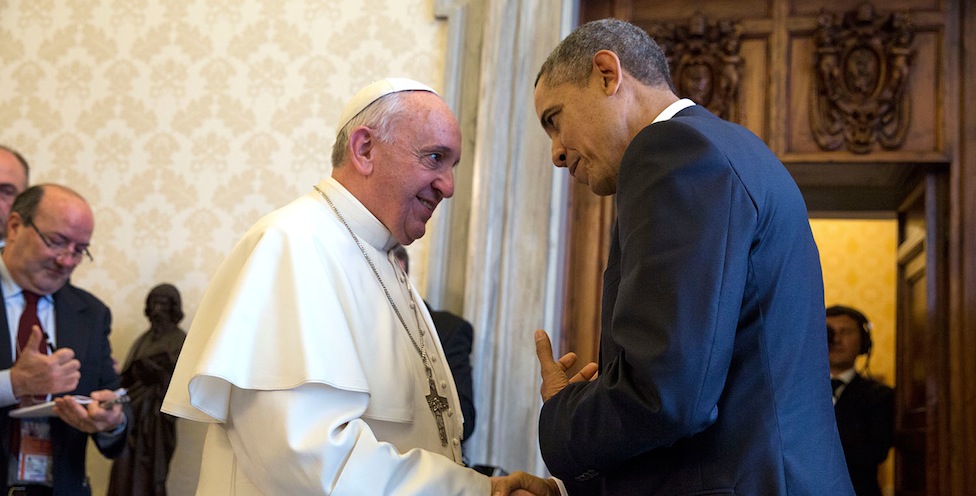
Watch some of the top videos of the Pope's visit:
Share this page with your network:
FACEBOOK TWITTER
Follow Along with the Pope's Trip
See photos of the visit..
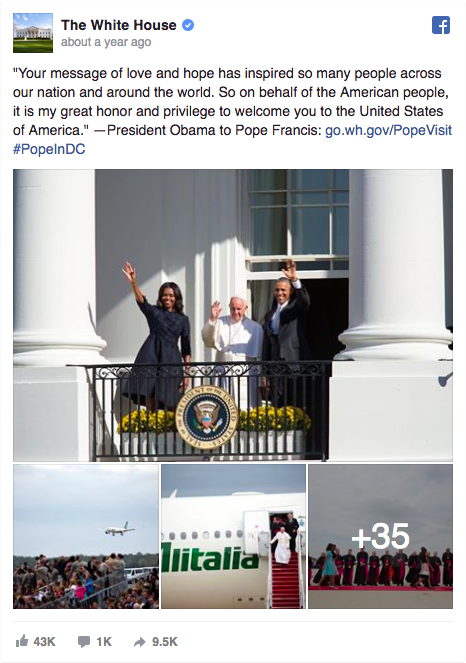
Words from Pope Francis:
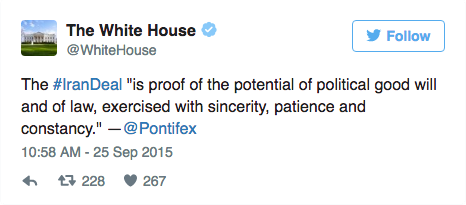
From the arrival ceremony:
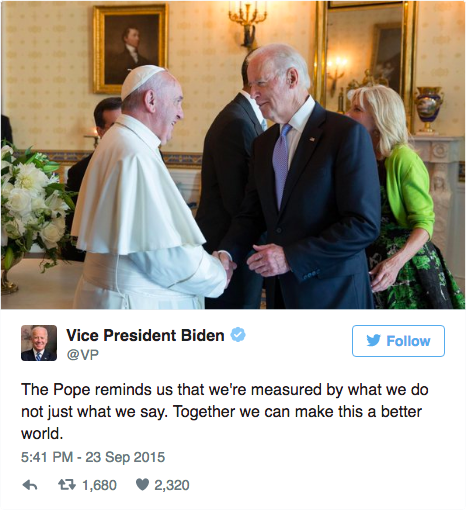
From the arrival ceremony setup:
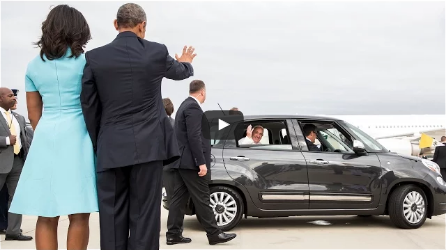
A digital exchange between President Obama and Pope Francis:
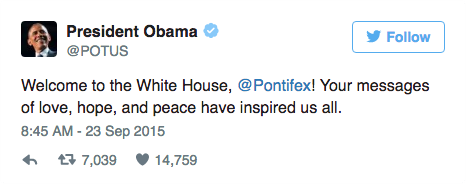
Pope Francis arrives in the United States:
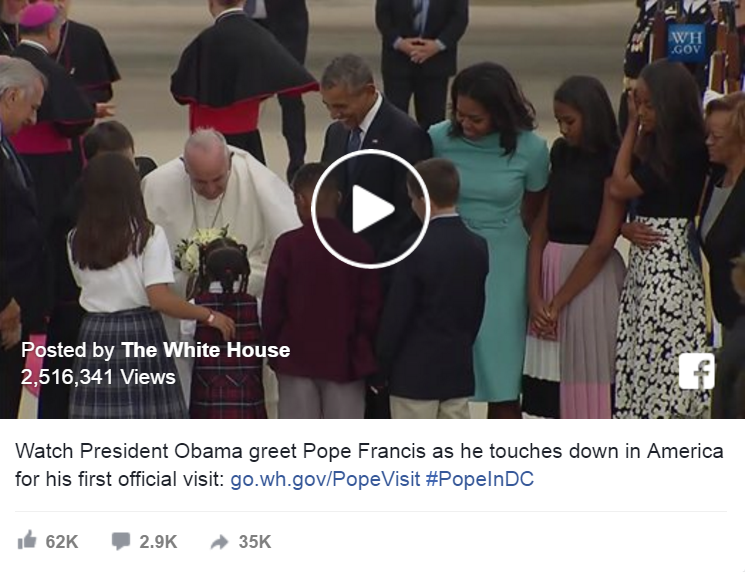
The Schedule
For up-to-date information about road closures and security announcements for Washington, D.C., New York, and Philadelphia, please visit www.secretservice.gov/events/pope/ .
Tuesday, September 22, 2015
4:00 PM:
Pope Francis arrives in D.C. at Joint Base Andrews.
Wednesday, September 23, 2015
White House Arrival Ceremony and personal meeting with President Obama (watch it live here at WH.gov/popevisit).
The White House Arrival Ceremony is not open to the public. Guests must have a ticket to attend.
Following the Pope’s meeting with the President, he will tour the Ellipse and parts of the National Mall.
There are no tickets required for the papal parade, but security around the secure area will be strict. Gates will open at 4 a.m. and close promptly at 10 a.m. after which no one will be allowed in the secure area. For more information on the parade route and access, visit the Archdiocese of Washington's website here .
There will be four entrances to the parade viewing area, including:
- East of the Ellipse on Constitution Avenue
- West of the Ellipse on Constitution Avenue
- East of the Washington Monument near Jefferson Drive and 15th Streets NW
- West of the Washington Monument near 17th Street NW
Midday Prayer with U.S. bishops at Saint Matthew’s Cathedral in D.C.
This event will be closed to the public
Junipero Serra Canonization Mass at the Basilica of the National Shrine of the Immaculate Conception.
Tickets to the Mass will be distributed through local parishes. The Catholic University Campus will be closed to members of the public during the Mass.
Thursday, September 24, 2015
Speech to the Senate and House of Representatives (Joint Session of Congress). The speech will be broadcast live on jumbotrons on the West Lawn of the Capitol.
Visit to St. Patrick’s Catholic Church in D.C. and Catholic Charities of the Archdiocese of Washington
After his visit to St. Patrick’s Catholic Church in D.C. and Catholic Charities of the Archdiocese of Washington, the Pope will travel to New York.
Departure for New York from Joint Base Andrews (D.C.)
Arrival at John F. Kennedy International Airport (New York)
Evening prayer at St. Patrick’s Cathedral (New York)
Friday, September 25, 2015
Address to United Nations General Assembly
Multi-religious service at 9/11 Memorial and Museum at the World Trade Center
Visit to Our Lady Queen of Angels School in East Harlem
Papal motorcade through Central Park
Madison Square Garden Mass
Saturday, September 26, 2015
On the morning of Saturday, September 26 to the Pope will travel from New York to Philadelphia, the final stop on his trip to the United States.
Departure for Philadelphia from John F. Kennedy International Airport
Arrival in Atlantic Aviation hangar at Philadelphia International Airport Philadelphia
Mass at Cathedral Basilica of Sts. Peter and Paul
Visit to Independence Mall
Visit to Festival of Families at Benjamin Franklin Parkway and Prayer Vigil with World Meeting of Families.
Access to certain areas of the parkway will require tickets, but tickets are not necessary to attend this day’s events. Forty jumbotrons, located down the Benjamin Franklin Parkway and other locations in the city, will show the events live, including the public coverage of Pope Francis. For more information about attending this event, visit their website here .
Sunday, September 27, 2015
Papal meeting with Bishops at St. Martin’s Chapel, St. Charles Borromeo Seminary.
Visit to Curran-Fromhold Correctional Facility. This event will be closed to the public.
Papal Mass for World Meeting of Families
Visit with organizers, volunteers and benefactors of the World Meeting of Families at Atlantic Aviation.
Departure for return to Rome.
Answers to Questions About the Pope's Visit
when will the pope visit the white house, how can i participate in the arrival of the pope at the white house.
- Gates open at 5:30AM and will close promptly at 8:15AM
- Please arrive no later than 6:30AM to guarantee your admission to the event
- There will not be any parking available on the White House complex
- Late arrivals will not be permitted—gates will close promptly at 8:15 AM
- Tickets are required for admission—members of the public will be turned away without an event ticket.
- The event will take place rain or shine
- Lost tickets will not be replaced
- Your event ticket will admit ONE person (children of all ages will need an event ticket to attend)
- Tablets, iPads, Tripods, Monopods, and Camera Sticks
- Large Bags, Backpacks, and Suitcases
- Drones and other Unmanned Aircraft Systems
- Animals other than Service/Guide Dogs
- Bicycles, Folding Chairs, Balloons, Coolers, Glass, Thermal or Metal Containers
- Signs or Flags of Any Kind
- Any Pointed Object(s), Including Pocket Knives
- Strollers and Diaper Bags
- Food, Liquids (water will be provided), Aerosols, Tobacco Products, Lighters, Personal Grooming Items
- Firearms, Ammunition, Fireworks, Laser Pointers, Stun Guns/Tasers, Mace/Pepper Spray, Toy Weapons or Knives of Any Kind
- Any Other Items Determined to be Potential Safety Hazards
Will the Pope’s arrival ceremony be broadcast online?
what will the pope and president obama discuss.
- Caring for the marginalized and the poor
- Advancing economic opportunity for all
- Serving as good stewards of the environment
- Protecting religious minorities and promoting religious freedom around the world
- Welcoming and integrating immigrants and refugees into our communities
I’m a member of the Press. How do I obtain credentials to cover the Pope’s visit to the White House?
where can i watch the pope's visit online, where can i get information about getting around washington, dc during pope francis' visit, generic expanding thank-you banner with share buttons.
You told the President you're in — now let your friends know, too.
Advertisement
Free Newsletters
Sign up now
Francis in the United States
Pope Francis traveled to the United States Sept. 22-28, 2015, taking part in the World Meeting of Families and giving speeches before the U.S. Congress and at the United Nations headquarters.
Pope Francis the pastor
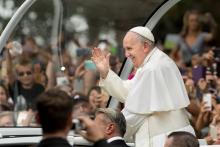
Pope Francis’ visit boosted the church. The pope himself? Not so much
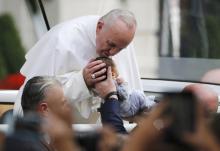
Pope's visit made Catholics feel proud of our church again
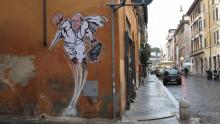
Pope Francis: Catholic superhero
Vatican: besides kim davis, francis also met gay couple in dc.
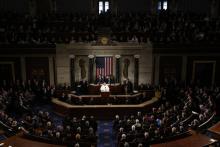
Pope Francis the prophet
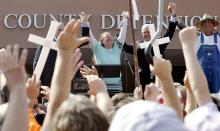
What we don't know about Francis' Kim Davis meeting
What to make of the pope francis-kim davis meeting.
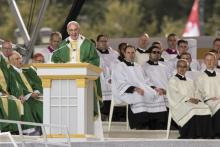
Why wasn’t a woman invited to preside at a papal prayer service?
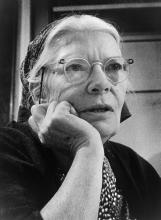
Dorothy Day: ‘We are not going into the subject of birth control at all as a matter of fact’
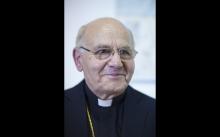
Syrian archbishop on Pope Francis’ U.N. speech
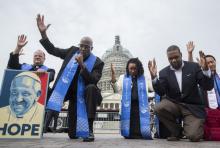
The call of Francis
Catholic worker hopes spotlight on day will boost beatification efforts.
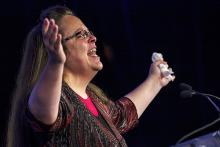
Pope Francis met Kentucky clerk Kim Davis
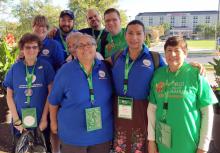
Equally Blessed pilgrims welcomed despite challenges
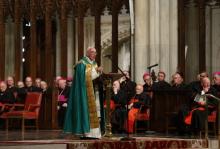
Pope sends painfully mixed signals to abuse victims
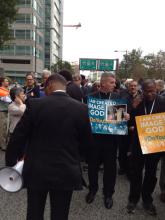
Social justice activists heartened by pope's words, amid lingering questions
Francis the liturgist.
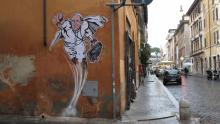
Following Francis: Follow-up
Pope francis reaffirms ban on women’s ordination.
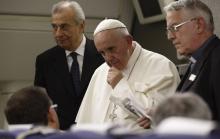
Francis again rejects women priests without specific reasoning
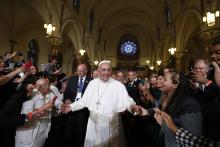
Pope Francis speaks truth to power
The ‘francis effect’ is about more than politics, pope francis' visit: wrap-up, part i.
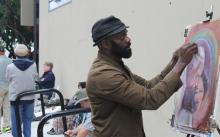
Sights and sounds of the parkway on Francis' final day in US
Editorial: pope brings some new non-negotiables, francis on papal flight: sexual abuse by priests a 'sacrilege', read pope francis' speech to wmof organizers, read pope francis' homily for the conclusion of the world meeting of families, following francis: sunday.
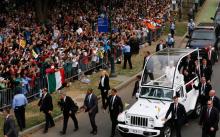
Francis' last message to America: Don't be afraid of new things!
Pope francis' closing homily, pope’s remarks sunday on sexual abuse, read pope francis' speech at curran-fromhold correctional facility.
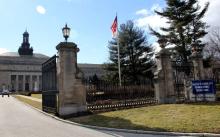
Francis' pastoral plan for families: gratitude over concerns
Pope francis at the prison, read pope francis' speech at meeting with bishops in philadelphia.
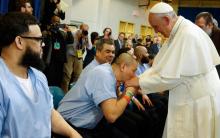
Visiting prison, pope says all people need forgiveness, cleansing
Pope francis' comments on clergy sex abuse, for only second time, francis meets abuse survivors, says 'god weeps'.
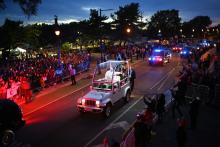
Francis: Families should be given work, healthcare
Read pope francis' speech at b. franklin parkway.
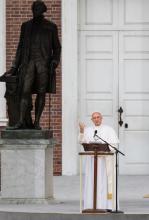
At Independence Hall, Francis links religious liberty, cultural identity
Read pope francis' speech at independence mall, francis at independence hall.
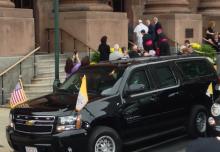
Following Francis in the dark hours
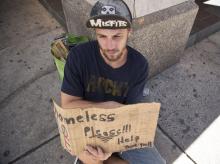
Police move homeless people off Philadelphia streets ahead of Pope Francis’ Mass
Read pope francis' homily at philadelphia cathedral.
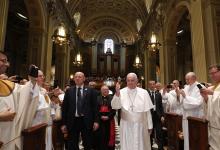
Francis: Church not about historic buildings, but personal calling
Pope francis at philly cathedral: break down these walls.
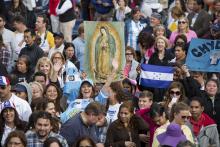
Following Francis: Saturday
Francis, the comic strip.
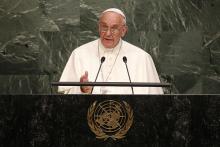
Leaders react to Pope Francis' United Nations speech
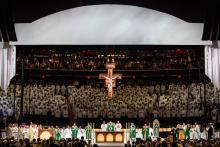
At NY Mass, Francis describes how to be a saint in the city
Read pope francis' homily at madison square garden.
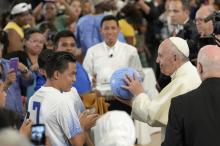
Pope goes back to school, meets students, community in Harlem
Pope francis at madison square garden, read pope francis' speech in harlem.
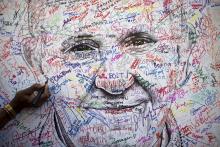
Uneasy LGBT conversations at family meeting
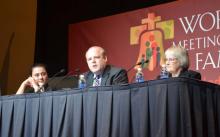
Hundreds shut out of sole session on gays at World Meeting of Families
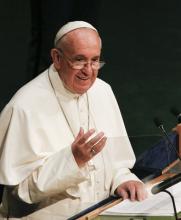
Francis, at UN, stresses 'reclaiming the environment,' 'absolute respect for life'
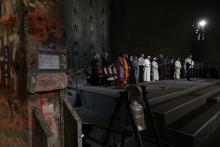
At Ground Zero, Francis asks 9/11 families to be instruments of peace
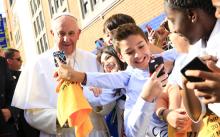
Mostly popes are seen but not heard
Read pope francis' speech at ground zero memorial, pope francis at ground zero.
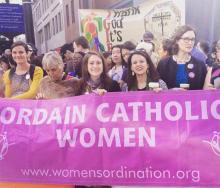
A church that dreams of rights for women can be great, too
Read pope francis' speech to the united nations, pope francis at the un, read pope francis' speech to u.n. personnel.
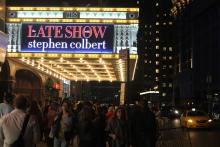
The embedded repor(t): Inside the ‘Late Show’ pope-a-palooza

Catholic justices 'no shows' at papal congress talk
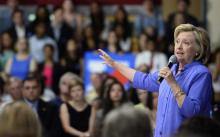
Heed Francis’ message: be good stewards of the earth
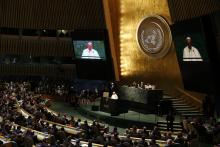
Following Francis: Friday
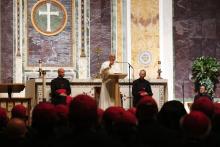
San Diego bishop: Pope's model of church one of transformation
Read pope francis' homily at st. patrick's cathedral.
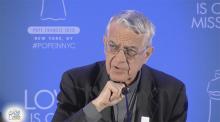
Vatican's Lombardi: Pope may address sexual abuse crisis in US again
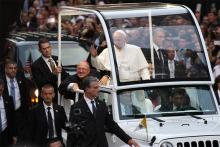
Francis praises US women religious, but is non-specific on sexual abuse
Pope francis at st. patrick's.
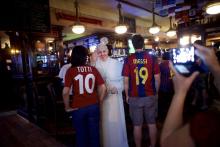
Philly prepares for unprecedented activity during pope's visit
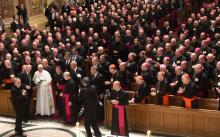
Pope’s address to bishops may have been his most important
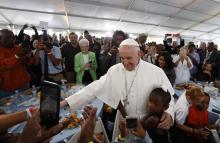
Pope Francis embraces Washington's hungry: 'No justification for homelessness'
Read pope francis' speech at the charitable center of st. patrick parish, read pope francis' speech to congress, controversies about pope francis visit started before the trip, pope francis at catholic charities.
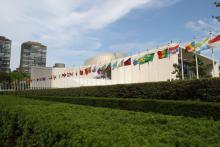
Hope for a moral voice awaits Pope Francis in his UN address
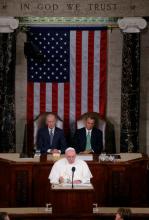
Francis, citing Day and Merton, pushes Congress to pursue common good
Pope francis' address to congress.
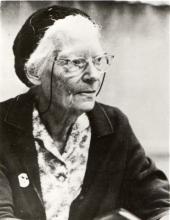
Day and Merton: the Catholic radicals Francis cited
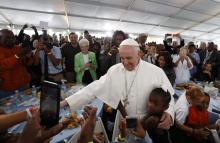
Following Francis: Thursday
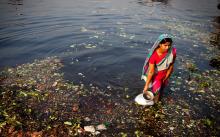
UN goals fall short of Francis' vision
Francis meets with nuns fighting contraceptive mandate, read pope francis' homily at the canonization of serra.
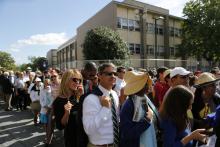
Newest saint, Junipero Serra, Francis says, protected Native Americans
Francis canonizes st. junipero serra, francis falters in addressing sex abuse.
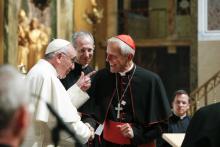
Francis tells US bishops to be ‘promoters of the culture of encounter’
Pope to us bishops: be pastors, not culture warriors, read pope francis' speech to the us bishops.
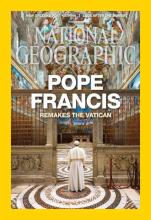
The story behind National Geographic’s Pope Francis story
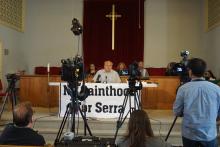

Native Americans make last-ditch plea against Serra canonization
Read pope francis' speech at the white house.
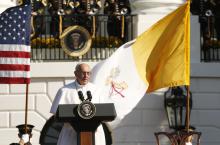
Francis meets Obama, calling for protection of religious liberty, environment
Pope francis at the white house, "if it is necessary for me to recite the creed, i can".
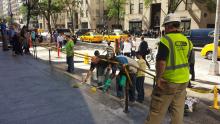
Following Francis: Wednesday
Vatican's lombardi: in us, francis wants to address global questions.
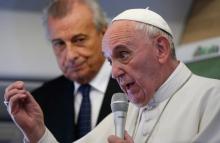
Francis to critics: Do I need to say the Creed?
Pope francis ' arrival ceremony.
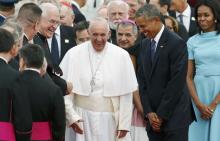
Francis lands in US for highly anticipated visit, greets Obama
Black catholics ask pope for apology, fr. luis olivares: a better choice for sainthood than serra.
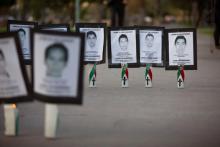
Parents of missing Mexican students travel to U.S. to appeal to pope
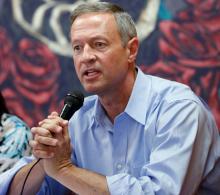
Francis' visit calls for a reflection on our nation's obligations, priorities
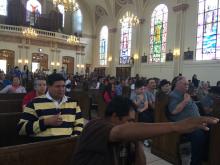
Hola, Papa Francisco! Hispanic Catholics shape US church
Why do you harden your hearts.
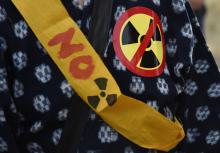
Editorial: Francis should speak frankly on nuclear threat
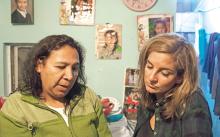
Families and Francis
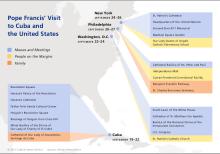
Pope's Itinerary For Visits To Cuba, US
Emeritus bishop discusses nyt op-ed.
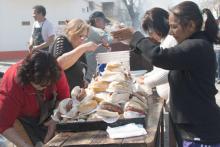
Change in Argentinean church comes from bottom up
Catholic higher-ed leaders pledge to wrap francis' environmental concerns into their mission, congressman to sit out pope’s address due to expected climate message.
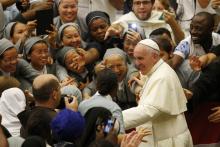
The more things stay the same, the more they change
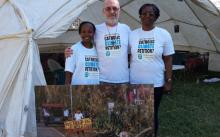
A view from a fast: Activists seek climate action ahead of pope’s DC visit
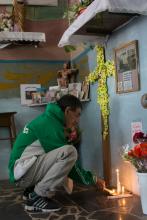
Francis' participation with families an example for other priests
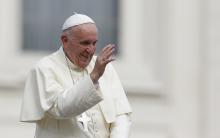
Will we listen to Pope Francis?
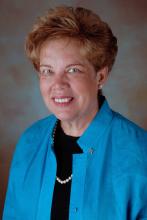
Compassion key in raising awareness of poverty, says CCUSA president
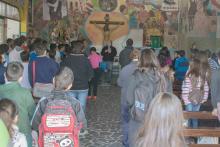
Buenos Aires slums have shaped a papacy
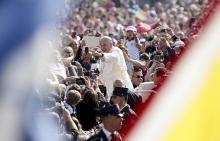
What some papal pundits get wrong about the polls — and why
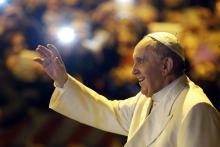
Philly teen arrested in alleged plot targeting Pope Francis visit
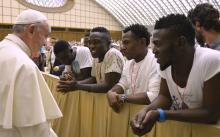
AFL-CIO leader sees Francis countering a ‘solidarity deficit’
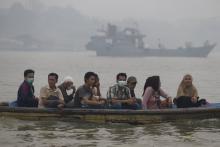
Encyclical unites religious, nonreligious voices on climate change
Want to see the pope up close washingtonians will get a peek, on u.s. soil will pope francis (please) speak out against the death penalty, 150 immigrants and refugees in new york will meet pope, jesuits publish special resource page for francis' us visit, five things to look for during the papal visit.
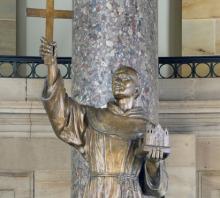
Papal Mass in Washington will be in Spanish
Transportation ideas for the papal mass in philadelphia, papal address to congress: symphony or opera.
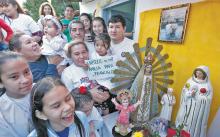
Will Pope Francis' strong message meet resistance in US?
House limits number allowed in chamber to hear papal address to congress, want to ride the train to see the pope you'll have to buy a lottery ticket, 'walk with francis pledge' urges washingtonians to do a good deed ahead of papal trip, pope francis' address to congress will be broadcast to crowd outside capitol.
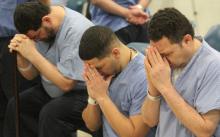
Pope Francis set to visit US prison housing convicted monsignor
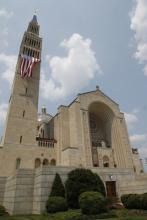
Pope Francis will visit as 'pastor,' not 'politician,' says Washington cardinal
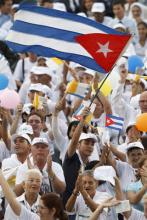
Pope Francis' visits to Cuba, US to highlight families, charity, tolerance
Organizers, union leaders seek to influence francis' us visit through vatican meetings, winning altar design announced for papal mass in washington.
22 photos that show the intense excitement surrounding Pope Francis' first-ever visit to the US
Pope Francis arrived in the United States for the first time as pontiff this week, and between addressing Congress , visiting various charities, and leading Mass, he's been keeping busy.
Greeted by President Obama and Vice President Biden upon his arrival to the Capitol on Tuesday, the pope's US travel plans include events in Washington, DC, New York City, and Philadelphia.
Here, we've gathered some of the best images of the pope's visit so far. They're just a few examples of his mass appeal, as well as his ability to connect with the Catholic community.
A crowd of supporters cheer as Pope Francis arrives at Andrews Air Force Base, just outside of Washington, DC.
The pope was greeted by President Barack Obama and First Lady Michelle Obama, as well as by other political and Catholic leaders.
President Obama shakes hands with Pope Francis during the arrival ceremony at the White House on Wednesday.
Here, they stand for the national anthem.
President Obama and Pope Francis wave to the crowd, which was so large that it stretched back around the Ellipse and onto the National Mall.
After the ceremony, Pope Francis arrived for the Midday Prayer of the Divine at the Cathedral of St. Matthew the Apostle. More than 300 US Bishops were in attendance..
A nun reaches out to touch Pope Francis as he arrives at the Basilica of the National Shrine of the Immaculate Conception for a Canonization Mass for Friar Junipero Serra.
Pope Francis delivered a powerful speech during a joint meeting of the US Congress Thursday.
During his speech, the pope addressed the topics of immigration, global warming, prison reform, the arms trade, wealth inequality, and the role of money in the political system.
People even gathered on the West Lawn of the US Capitol to watch the pontiff's speech by video screen.
Here, he blesses a young child.
After his speech, Pope Francis stepped outside to greet the crowd that had gathered.
After a successful DC visit, the pope was off to New York City.
At New York's John F. Kennedy Airport, the pope was greeted by followers and gifted a small replica doll.
He engaged with the crowd, giving well wishes to Gerard Gubatan of Brooklyn (center left).
He then hopped in a helicopter to get into the city.
Here, he rides in the famous "popemobile" outside of St. Patrick's Cathedral in New York City.
Pope Francis shares a reflection during a prayer service at St. Patrick's Cathedral that evening.
On Friday, Pope Francis arrived at the General Assembly of the United Nations, where he repeated his concern on behalf of the global poor.
"They are cast off by society, forced to live off what is discarded, and suffer unjustly from the consequences of abuse of the environment. These phenomena are part of today's widespread and quietly growing 'culture of waste,'" he said.
Next, he was off to the interdenominational service at the site of the 9/11 memorial and museum.
He said a prayer over the memorial.
- Main content
50 Years Of Pope Visits To The United States

Reporter, HuffPost
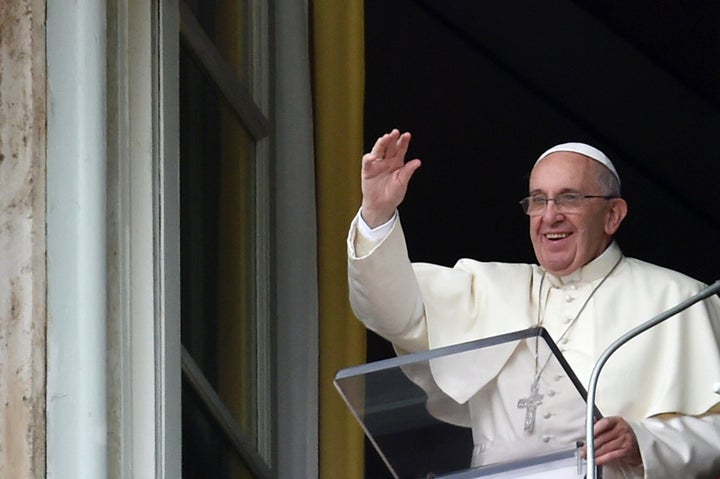
Pope Francis waves to faithfuls gathered in St. Peter's Square following his Sunday Angelus prayer from the window of the pontiff studio on August 16, 2015 at the Vatican.
Pope Francis will make his first visit to the United States in September, with stops in Washington, New York and Philadelphia. His trip will add to the 50-year history of pope visits to the U.S.
Pope Paul VI made the first papal visit to the U.S. in October 1965. He addressed the United Nations General Assembly, attended the New York World's Fair and celebrated Mass at Yankee Stadium. He also met with President Lyndon Johnson.
In October 1979, Pope John Paul II made his first of seven trips to the U.S. He visited Boston, New York, Philadelphia, Chicago and Des Moines, and met President Jimmy Carter in Washington.
In February 1981, John Paul II spent several hours on a stopover in Anchorage, Alaska, after canonizing the first Filipino saint, Lorenzo Ruiz , in Manila. Three years later, he met President Ronald Reagan during another stopover in Alaska, while en route to canonize 103 martyrs in Seoul, South Korea.
John Paul II's longest U.S. visit was in September 1987, when he made stops in Miami; New Orleans; San Antonio, Texas; Phoenix; Los Angeles; Salinas, California; and Pontiac, Michigan. In 1993, he celebrated Mass at World Youth Day and met with President Bill Clinton in Denver.
John Paul II visited New York City, New Jersey and Baltimore in 1995, and met again with Clinton. His final visit was in January 1999, when he celebrated Mass with more than 100,000 people at a football dome in St. Louis.
Pope Benedict XVI visited the U.S. once, in April 2008. He met with President George W. Bush at the White House and visited New York City, where he offered a blessing at the World Trade Center site.
Here's a look back at 50 years of pope visits to the U.S.:
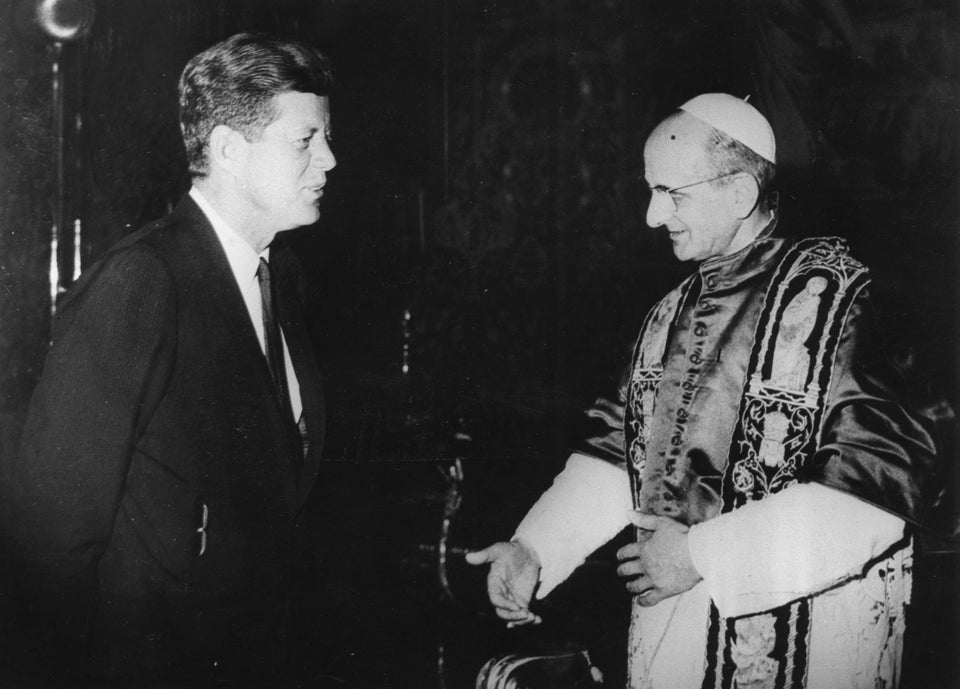
Pope John Paul II gestures to the crowd during his trip to the United States, on Oct. 6, 1979.
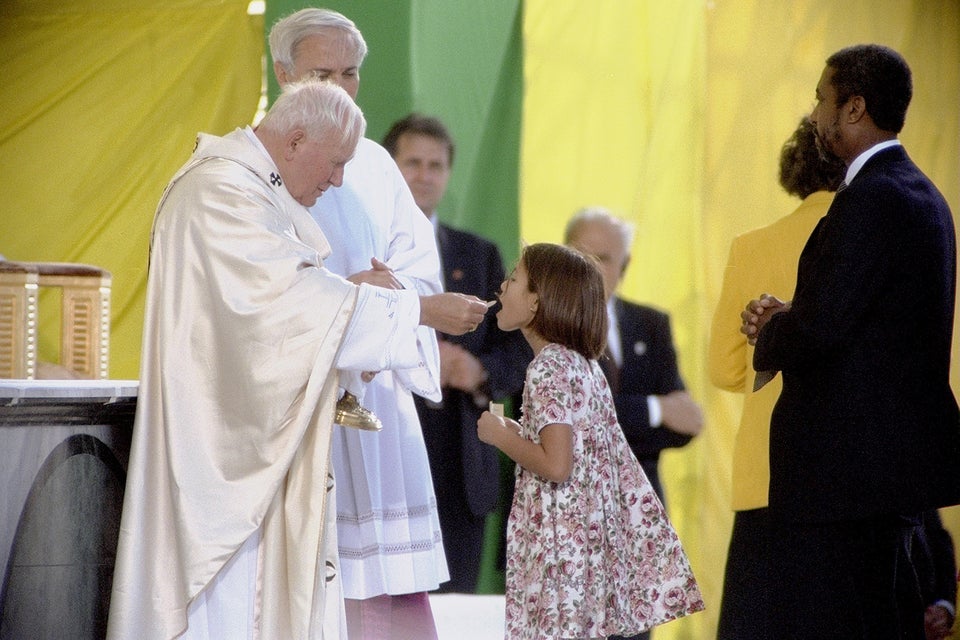
Young girl receives communion from Pope John Paul II as they celebrate Mass at Aqeduct Race Track in Jamaica, Queens, on Oct. 6, 1995.
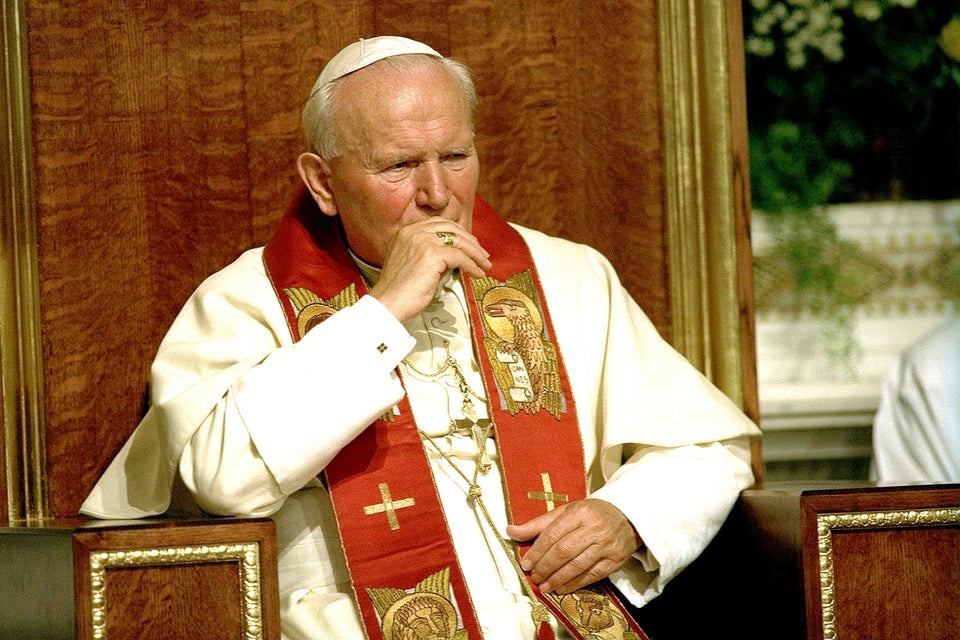
Pope John Paul II says evening prayers in the Chapel of St. Peter and St. Paul at St. Joseph's Seminary in Yonkers, during his 1995 visit to the U.S.
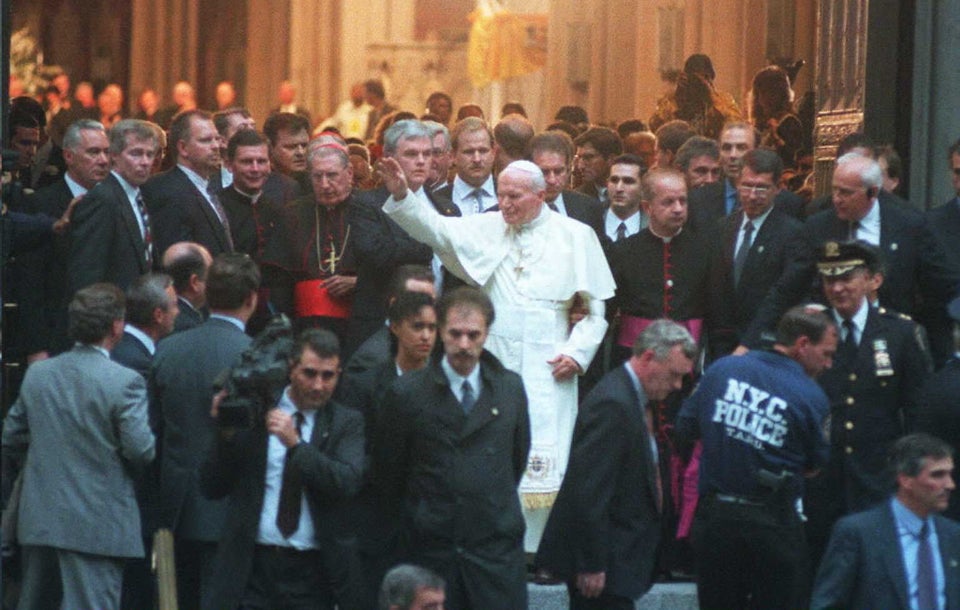
Pope John Paul II leaves St. Patrick's Cathedral on Oct. 7, 1995, in New York surrounded by security and police as he heads for an impromptu walk down Fifth Avenue.

Pope John Paul II prepares communion during an outdoor Mass in New York's Central Park, Oct., 7, 1995.
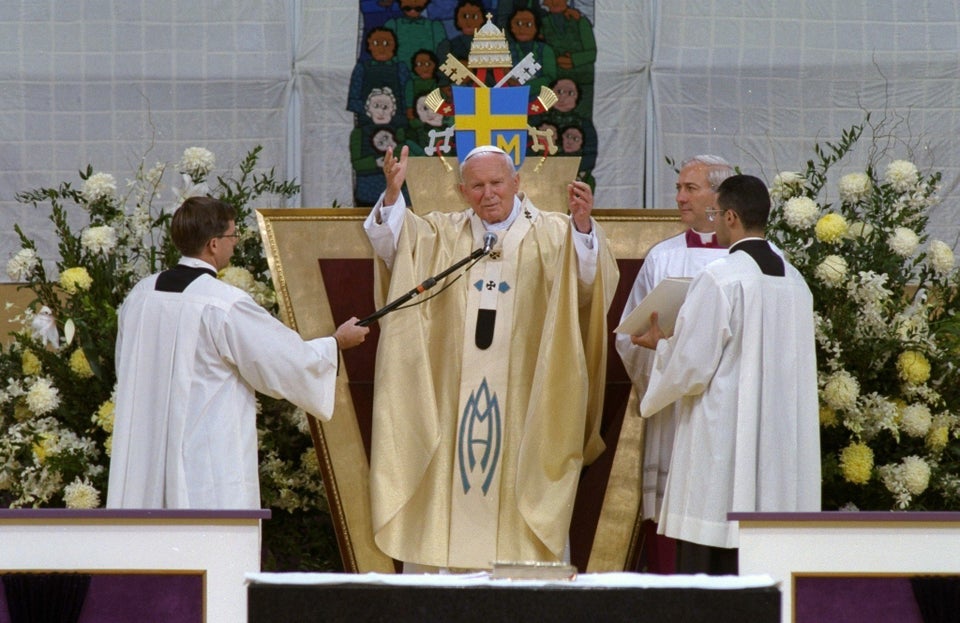
Pope John Paul II during Mass in Central Park on Oct. 8, 1995.
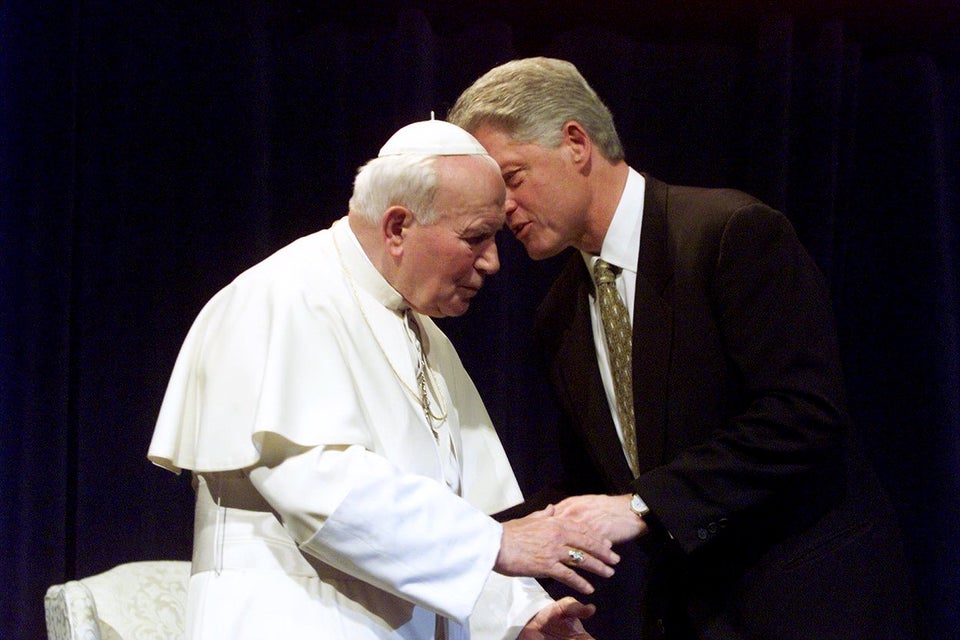
Pope John Paul II greets President Bill Clinton during his visit to St. Louis in 1999.
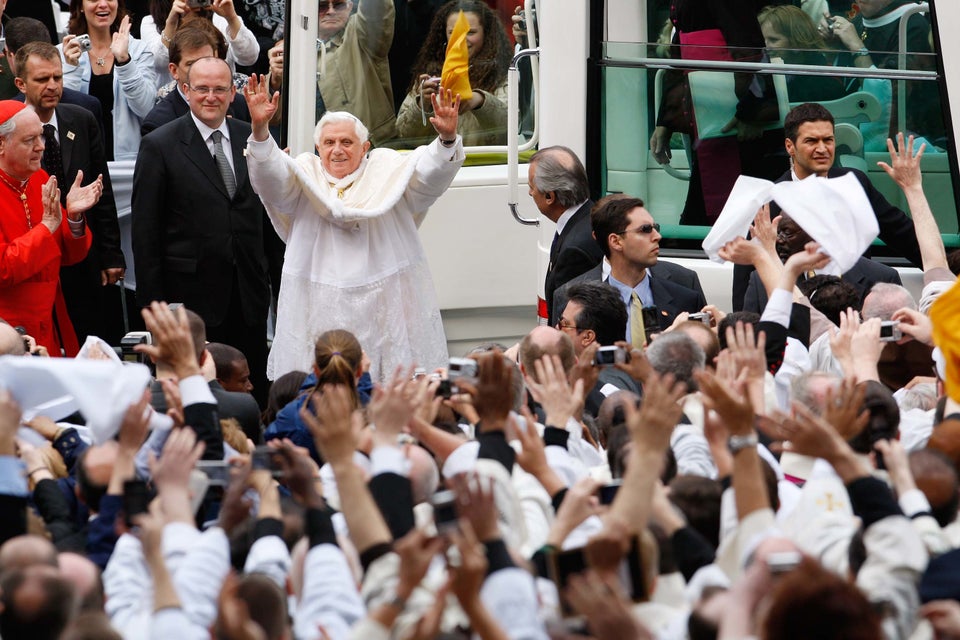
Pope Benedict XVI waves to supporters after exiting the popemobile at Yankee Stadium in the Bronx borough of New York, U.S., on Sunday, April 20, 2008.

Pope Benedict XVI gestures as he arrived for a mass at the Yankee Stadium in New York on April 20, 2008.
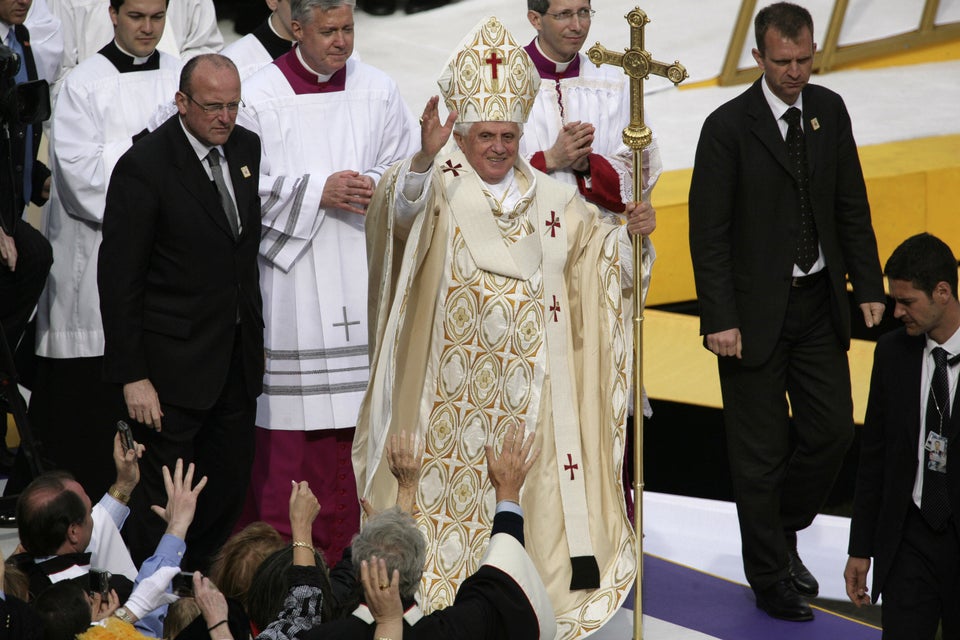
Pope Benedict XVI waves after the conclusion of Mass at Yankee Stadium in New York on April 20, 2008.
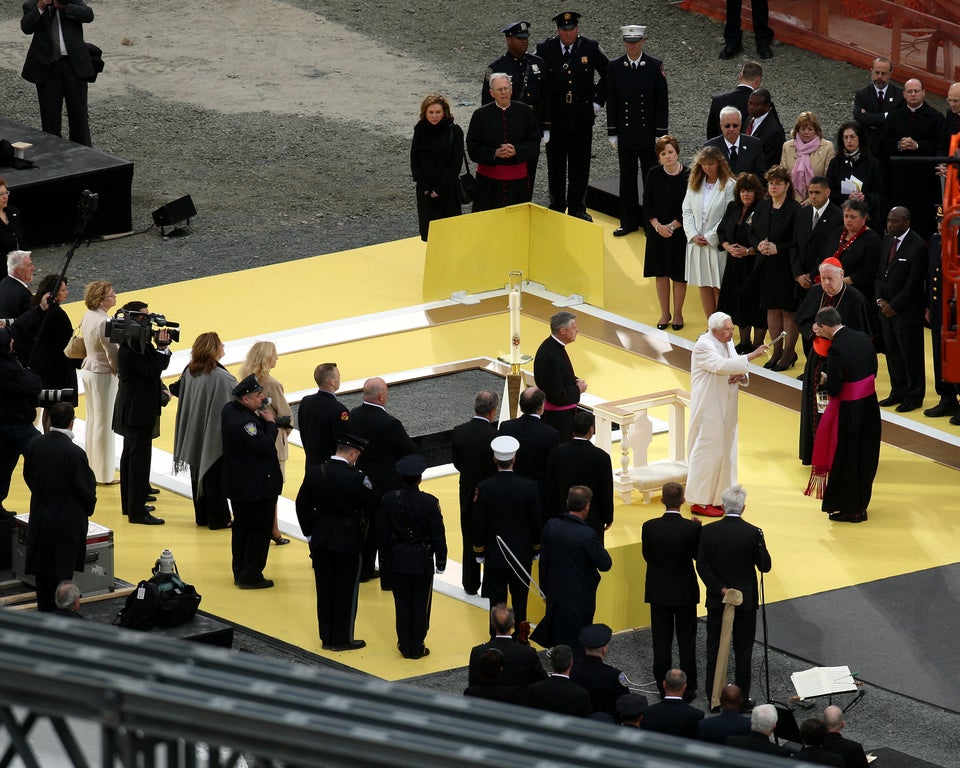
Pope Benedict XVI gives a blessing with holy water during ceremonies at Ground Zero on his last day in New York on April 20, 2008.
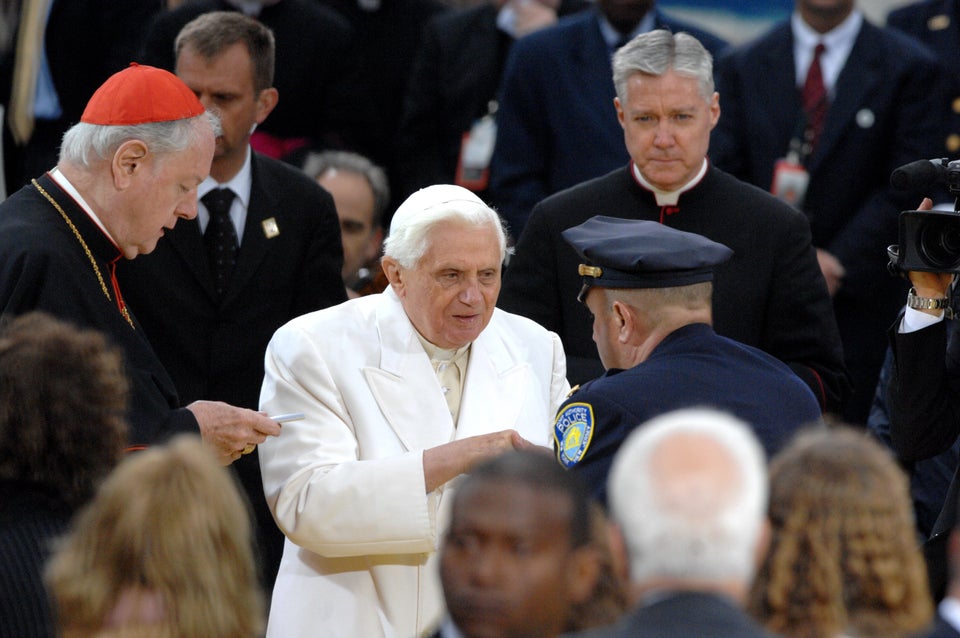
Pope Benedict XVI visits Ground Zero on his final day in New York City, April 20, 2008.
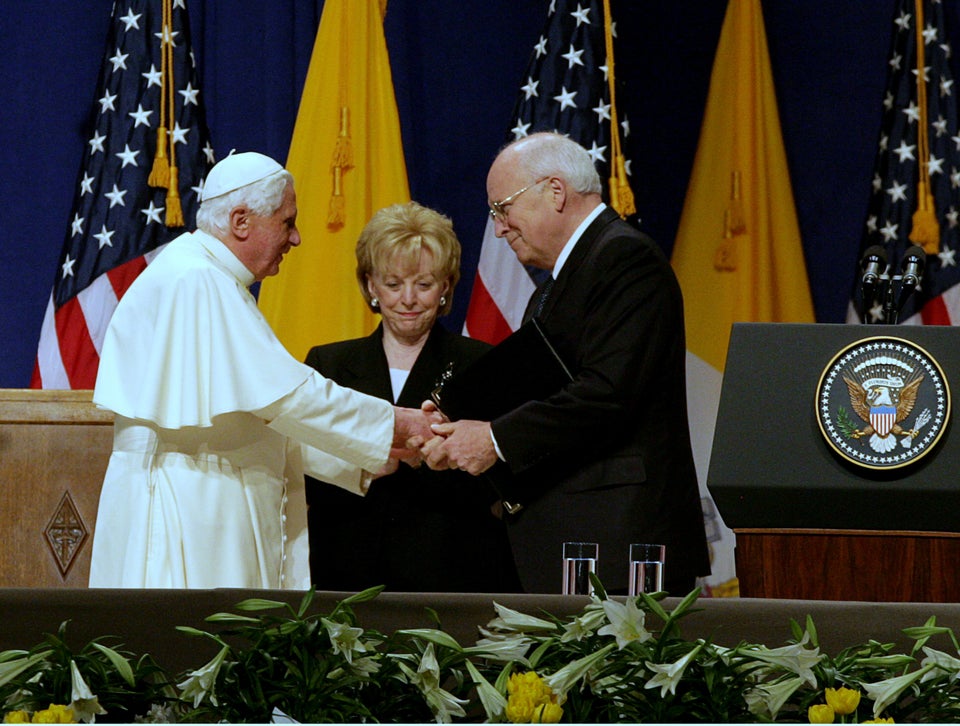
Pope Benedict XVI speaks at JFK International Airport, joined by Vice President Richard and Mrs. Lynne Cheney during his farewell ceremony on April 21, 2008.
Also on HuffPost:
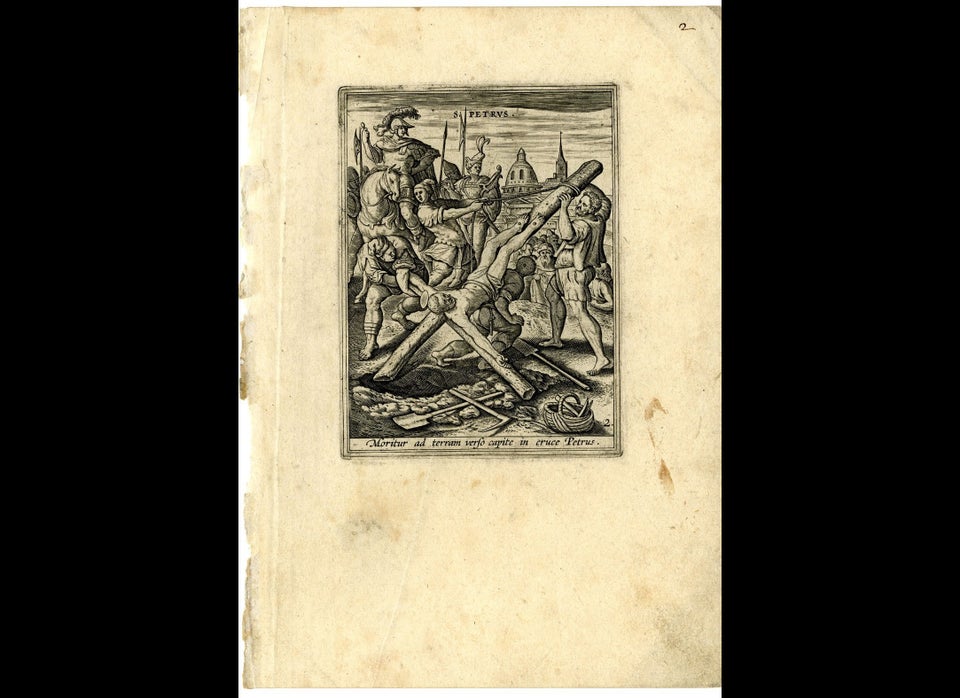
Popes Who Shook The World
Popular in the community, from our partner, more in religion.
An official website of the United States government Here's how you know
Official websites use .gov A .gov website belongs to an official government organization in the United States.
Secure .gov websites use HTTPS A lock ( Lock A locked padlock ) or https:// means you’ve safely connected to the .gov website. Share sensitive information only on official, secure websites.
2015 Papal Visit to United States
Summary of visit.
Pope Francis is scheduled to visit Washington DC, New York City, and Philadelphia from September 22 – 27, 2015.
Official Schedule of Events: http://www.usccb.org/about/leadership/holy-see/francis/papal-visit-2015/2015-papal-visit-schedule.cfm
DOT Activities
Papal visit task force.
The United States Department of Transportation (USDOT) Emergency Response Team (ERT) has established the Papal Visit Task Force (PVTF) to coordinate intermodal activities related to Pope Francis's three-stop visit within the United States in September 2015. The PVTF is comprised of representatives from USDOT's Operating Administrations and Offices of the Secretary of Transportation. Through this Task Force, USDOT has been involved in several steering and planning committees including the New York City and Philadelphia airport, airport security, transportation/traffic, and consequence management subcommittees. In addition, USDOT personnel will be staffed at a number of coordination centers during the visit.
Telework Policy (USDOT Headquarters)
For the 2015 Papal Visit, while the Federal government will remain open, supervisors are strongly encouraged to utilize the workplace flexibilities and telework options that are in place for their organization.
Please see the DOT Telework Policy for additional information.
Additionally, Operating Administrations and staff offices will need to adhere to internal policies and Collective Bargaining Agreements that may cover workplace flexibilities and telework options.
Telework: Remote Access Communications
To access email or other work files remotely, you can use:
- Virtual Private Network (VPN) gives you a secure telework option, but you must take your laptop with you
- Virtual Desktop Infrastructure (VDI) is another telework option, which allows you to use your own computer. You access your "virtual desktop" through the VDI application
- Remote.dot.gov is a website that lets you access your email through Outlook Webmail Application (OWA), SharePoint and DOTnet
Check out the remote access page and the VDI page on DOTNET.
For questions or problems with Remote Access Communications, call the 5-HELP Service Center at (202) 385-4357, (866) 466-5221, or email to [email protected]
Transportation Information for Venue Locations
Washington, d.c. (september 22, 23, 24), transit (via wmata).
- Road (via DDOT)
Aviation (via FAA)
New york, ny (september 24, 25, 26), transit (via mta), rail (via mta - metro north ; lirr ) , road (via nyc.gov), philadelphia, pa (september 26, 27, 28), transit (via septa), rail (via amtrak), road (via penndot), aviation ( notice 1 , notice 2 ) (via faa), additional links, faa informational videos.
- The Papal Visit is a No-Drone Zone
FAA Press Releases
- Cities Hosting the Papal Visit are No Drone Zones Download
U.S. Secret Service Press Releases
- Law Enforcement and Public Safety Agencies Announce Security Restrictions and Joint Transportation Plan for the 2015 Papal Visit to Washington, D.C. September 22-24 Download
- Law Enforcement and Public Safety Agencies Announce Security Restrictions for the 2015 Papal Visit to New York, N.Y. September 24-25 Download GPA11-15-Papal-Visit-DC.pdf
- Law Enforcement and Public Safety Agencies Announce Security Restrictions and Joint Transportation Plan for the 2015 Papal Visit to Philadelphia, PA September 25-27 Download
Contact Information
Please send all related questions to your Operating Administration POC or to [email protected] .
A blog of the U.S. National Archives

Pieces of History
Papal visits to the United States
Pope Francis’s visit this September marks the 10th time a Pope has visited the United States.
Since the Federal Government is heavily involved in a papal visit, and the National Archives holds the records of the Federal Government, we have documents related to all these events.
The first Pope to visit the United States was Pope Paul VI, who met with President Lyndon Johnson at the Waldorf Astoria hotel in New York City. This was Paul VI’s only visit to the United States.

Nearly 15 years passed before another papal visit. In 1979, Pope John Paul II came to the United States and became the first Pope to visit the White House. Pope John Paul II visited the United States a total seven of times.

On April 16, 2008, on his 81st birthday, Pope Benedict XVI visited President George W. Bush at the White House. This was the most recent papal visit until this week.

Search our Online Catalog for more documents and photographs of papal and other dignitaries’ visits.
Share this:
Leave a reply cancel reply.
Your email address will not be published. Required fields are marked *
Save my name, email, and website in this browser for the next time I comment.
Pope: May Rome be its most welcoming, hospitable, and generous during Jubilee
By Linda Bordoni
Pope Francis crossed the River Tiber on Monday morning after having accepted the Mayor of Rome’s invitation to visit the Capitoline Assembly as the city gears up to host the 2025 Jubilee Year.
During his discourse to the Mayor and his administration, the Pope expressed gratitude for the excellent collaboration between the Holy See and the Municipality and for the latter’s commitment to preparing the city to welcome the pilgrims in the best possible way.
Rome, he noted, is a city with a universal spirit “at the service of charity, at the service of hospitality and welcome that extends from pilgrims to tourists, to migrants, to those in grave difficulty: the poorest, the lonely, the sick, the imprisoned, the excluded” whom, he added, “should be the most truthful witnesses of this spirit.”
“They should testify that authority is fully such when it serves everyone, when it uses its legitimate power to meet the needs of the citizens, particularly the weakest, the last.”
The Pope delivered his speech in the Hall of Flags after having been heralded by trumpets as he arrived at the magnificent Capitoline Square designed by Michelangelo on the Hill of the same name. The Capitoline – referred to in Rome as the “Campidoglio” is the seat of the Municipality; it overlooks the Roman Forum, where Pope Francis and the Mayor, Roberto Gualtieri, paused before the signing of the Book of Honour, the exchange of gifts and the start of the ceremony.

Incredible history of the city of Rome
Highlighting the incredible history of the city, the Holy Father said: "I come to meet you and, through you, the entire city, which almost since its birth, about 2,800 years ago, has had a clear and constant vocation of universality."
Noting that "Ancient Rome, due to its legal development and organizational capabilities, and the construction over the centuries of solid and lasting institutions, became a beacon to which many peoples turned for stability and security."
He upheld the many virtues of ancient Roman culture, and emphasized the need for its values to evolve: "This ancient Roman culture, which undoubtedly experienced many good values, also needed to elevate itself, to confront a message of greater and deeper fraternity, love, hope, and liberation."

The values of Christianity
Pope Francis dwelt on how the spread of Christianity within Roman society, driven by the testimonies of martyrs and the charity of early Christian communities; and said Christianity offered individuals a radical hope and challenged institutions, like slavery, that were once deemed natural and unchangeable.
The Pope spoke of the transformation from the Rome of the Caesars to the Rome of the Popes and said that despite the changes, Rome’s universal vocation was not only confirmed but elevated, with the Church’s mission extending beyond geographical boundaries to proclaim Christ’s message globally.
"Many things changed, but Rome's vocation to universality was confirmed and exalted," he said.
“Many things changed, but Rome's vocation to universality was confirmed and exalted,”
Lateran Pacts
Noting that this year marks the 40th anniversary of the revision of the Lateran Pacts, Pope Francis said, "The Treaty reaffirmed that the Italian State and the Catholic Church are, 'each in its own order, independent and sovereign,' committing to the full respect of this principle in their relations and mutual collaboration for the promotion of man and the good of the country."
Inclusivity of Jubilee Year
Thus, as Rome prepares for the Jubilee of 2025, the Pope called for the city's readiness to welcome the influx of pilgrims and tourists and said active cooperation between local and national authorities cannot but benefit all.
"Even the next Jubilee can have a positive impact on the face of the city, improving its decorum and making public services more efficient, not only in the centre but also fostering the rapprochement between centre and peripheries," he said.
Reiterating Rome's universal spirit, dedicated to charity, hospitality, and serving those in need, including the poor, the lonely, the sick, the imprisoned, and the excluded, he announced his intention to open a Holy Door in one of Rome’s Prisons during the Jubilee Year.
“I have decided to open a Holy Door in a prison.”
Concluding, Pope Francis encouraged Rome to continue to showcase its true, welcoming, and noble character.
Jubilee Year: a privilege and a responsibility
He acknowledged the challenges posed by the influx of visitors and offered a new perspective for the city, explaining that the immense cultural and historical wealth of Rome is both a privilege and a responsibility for its citizens and leaders.
"Every problem it faces is the 'reverse' side of its greatness and, from a factor of crisis, it can become an opportunity for development: civil, social, economic, cultural," he said.
“From a factor of crisis, it can become an opportunity for development.”

Salus Populi Romani
Finally, he called for strengthened cooperation among all governing bodies to honour the city’s providential role and recalled his own devotion to the Blessed Virgin Mary, Salus Populi Romani.
“Every time I came to Rome, I would visit the Salus Populi Romani and ask her to accompany me in my endeavours,” the Pope said, invoking her blessing and praying that she may “watch over the city and the people of Rome, infuse hope and inspire charity."
Thank you for reading our article. You can keep up-to-date by subscribing to our daily newsletter. Just click here

More upcoming events:
The Pope's Agenda

Listen to our podcasts

Subscribe to our newsletters
To get the latest news

Papal audiences

Daily readings

Saint of the day

Color Scheme
- Use system setting
- Light theme
Pope Francis allegedly repeats gay slur, opposes gay men in priesthood
ROME - Pope Francis on Tuesday reiterated his opposition to gay priests, allegedly repeating a highly pejorative slur in an encounter with clerics just two weeks after the Vatican issued an apology amid reports that he had used the same word in an earlier meeting with bishops.
Francis reportedly repeated the slur in a meeting with 200 priests at Rome’s Salesian Pontifical University, according to major Italian outlets. The Vatican, in a statement, did not mention use of the derogatory word, but said that the pontiff had spoken of the “danger of ideologies in the Church.”
The Vatican said the pope “reiterated the need to welcome and accompany gay men in the Church,” but had called for prudence regarding their entry to the priesthood.
The 87-year-old pontiff has previously made landmark statements in support of same-sex civil unions, conducted LGBTQ+ outreach, and last year approved short blessings for same-sex couples by Catholic priests. But Francis, who famously said “who am I to judge” when asked about gay priests shortly after becoming pope in 2013, has also expressed caution about admitting homosexual men to seminaries. He has essentially backed a 2005 Vatican ruling that “homosexual candidates cannot become priests because their sexual orientation estranges them from the proper sense of paternity.”
Major Italian media outlets - including Corriere della Serra, La Repubblica and ANSA - reported that the pope during Tuesday’s meeting also repeated the word “frociaggine,” which in the Roman Italian dialect roughly translates as “faggotness.”
Two weeks ago, a senior Vatican official confirmed to The Washington Post that the pope had used the same word in a different, May 20 meeting with bishops. Eight days after that meeting, and after reports that the pope had used the slur in the Italian press, the Vatican offered a rare apology. Without confirming that the pope had used the word, the Vatican then said “the Pope never intended to offend or express himself in homophobic terms and he apologizes to those who felt offended by the use of a term reported by others.”
A Vatican spokesman did not immediately respond to a request for comment on the pope’s alleged use of the word again.
Citing sources that were present at the meeting, Corriere della Sera also quoted the pope as saying “gay people are good guys [and] have nice paths of faith.” But if they sought the priesthood, they should be instead directed to a spiritual guide or “to some psychologist.” If they became priests, the outlet quoted the pope as saying, gay men were likely to “fail while exercising their ministry.”
Francis has been known to speak far more colloquially than past popes, and observers have argued that the pope may not realize the slur he employed is considered offensive. Though born and raised in Argentina, he hails from an Italian family and has spoken the language from a young age.
Some theologians said the slur was less important than the pope’s obvious stance against gay men becoming priests.
Andrea Grillo, professor of sacramental theology at the Anselmianum, a pontifical university in Rome, said “we should focus on his underlying assumption that homosexuals shouldn’t be made priests, which is the real issue here.”
“The pope seems convinced of [the veracity of outdated] theories according to which a homosexual won’t be able to remain chaste, and thus cannot be ordained,” Grillo said. “That theory is groundless, but I have the feeling [Francis still] believes it to be true.”
Hydropower is ready to step up to the plate against summer heat
Summer is nearly here and the Northwest has sprung to life as the days have grown longer and warmer.
Pope Francis reminds city officials of Rome’s welcoming nature ahead of Jubilee Year

ROME (CNS) -- Rome is unique and has a vocation as a universal city, Pope Francis said.
Rome has “a universal spirit” that aims to be at the service of charity, hospitality and welcome, he told the city’s mayor and government officials in Rome’s City Hall.
“Pilgrims, tourists, migrants, those in serious difficulty, the poorest, the lonely, the sick, the imprisoned and the excluded are the most authentic witnesses of this spirit,” which is why the pope will be opening a holy door in a prison for the Holy Year 2025, he said in his speech in the city’s Julius Caesar Hall June 10.
Authority is only fully realized “when it serves everyone, when it uses its legitimate power to meet the needs of the citizens, particularly the weakest and the least,” he said. This applies not only to political figures, but also to priests and bishops, who must be “close to the people of God in order to serve them, to accompany them.”
Making his second official visit to Rome’s City Hall five years after his first, Pope Francis was accompanied by Rome Mayor Roberto Gualtieri from his vehicle to look out over the Roman Forum from an archway at the city government’s headquarters.
Ancient Roman culture undoubtedly exhibited a number of “good values,” the pope told city officials. But it was also seeking something more and “Mount Olympus was no longer enough,” referring to where the Greeks and Romans believed their pagan gods lived.
“A larger and deeper message of fraternity, love, hope and liberation” was found in Christ and his Gospel, he said. And the Christian faith “would in time permeate and transform the lives of people and institutions themselves.”
Institutions and customs evolved “to a higher level, abandoning little by little, for example, … slavery,” which even educated and empathetic people had seen as natural and as a given.
Slavery is a very significant example of how “even refined civilizations can present cultural elements that are so ingrained in the mentality of people and society as a whole that they are no longer perceived as contrary to the dignity of the human being,” the pope said.
This also happens today, he said, “when, almost unconsciously, we sometimes risk being selective and partial in the defense of human dignity, marginalizing or discarding certain categories of people, who end up finding themselves without adequate protection.”
The pope expressed his hope that “Rome continue to manifest its true nature, a welcoming, hospitable, generous and noble face.”
“The enormous influx of pilgrims, tourists and migrants into the city, with all that it entails in terms of organization, could be seen as a burden, an obstacle that hinders the normal flow of things. In reality, all of this is Rome, its uniqueness in the world, its honor, its great attraction and its responsibility toward Italy, the church and the human family,” he said.
“The immense treasure of culture and history lying in the hills of Rome is the honor and obligation of its citizenry and leaders, and it expects to be properly valued and respected,” he said.
As the city prepares to host the Holy Year 2025, it will attract even more people of faith for “a prayerful and penitential pilgrimage” and tourists “who come to admire its immense treasure of works of art and the grandiose traces of past centuries,” he said.
In fact, “the upcoming Jubilee can also have a positive impact on the very face of the city, improving its decorum and making public services more efficient, not only in the center but fostering a connection between the center and the outskirts,” he said.
“That is why I like to go and visit the outlying parishes, so that they feel that their bishop is close to them,” he said.
The pope also signed the guest book quoting from the Aeneid by the Roman poet, Virgil, with “et sublato patre montem petivi” (carrying my father, I took to the hills). The verse, which the pope refers to often, describes Troy’s hero, Aeneas, leaving his sacked city with his father and son -- representing his past and future -- to eventually settle in Italy, south of Rome.
With this decision to leave Troy, the pope wrote, referring to the Roman legend, “Rome was born, born from afar, born on a journey.”

Most popular

Your source for jobs, books, retreats, and much more.
The latest from america

- Election 2024
- Entertainment
- Newsletters
- Photography
- Personal Finance
- AP Investigations
- AP Buyline Personal Finance
- AP Buyline Shopping
- Press Releases
- Israel-Hamas War
- Russia-Ukraine War
- Global elections
- Asia Pacific
- Latin America
- Middle East
- Election Results
- Delegate Tracker
- AP & Elections
- Auto Racing
- 2024 Paris Olympic Games
- Movie reviews
- Book reviews
- Personal finance
- Financial Markets
- Business Highlights
- Financial wellness
- Artificial Intelligence
- Social Media
Pope recreates the 2014 Mideast peace prayer in Vatican Gardens to beg for an end to Gaza conflict
FILE - Pope Francis is flanked by Israel’s President Shimon Peres, right, and Palestinian President Mahmoud Abbas during an evening of peace prayers in the Vatican gardens, Sunday, June 8, 2014. Pope Francis gathered the Israeli and Palestinian ambassadors to the Vatican Gardens on Friday, June 7, 2024 to pray for an end to the war in Gaza, marking the 10th anniversary of a similar encounter with the Israeli and Palestinian presidents with a new appeal for peace.(AP Photo/Gregorio Borgia, File)
- Copy Link copied
ROME (AP) — Pope Francis gathered the Israeli and Palestinian ambassadors to the Vatican Gardens on Friday to pray for an end to the war in Gaza, marking the 10th anniversary of a similar encounter with the Israeli and Palestinian presidents with a new appeal for peace.
“Every day I pray that this war will finally end,” Francis told the small gathering, which included around two-dozen cardinals and the Holy See’s diplomatic corps.
Among them were Israeli Ambassador Raphael Schutz and Palestinian Ambassador Issa Kassissieh, as well as representatives of Italy’s Jewish and Muslim communities.
The event recreated the first such encounter Francis hosted in the gardens this time 10 years ago, when he welcomed Israel’s then-President Shimon Peres and Palestinian leader Mahmoud Abbas.
At the time, a round of U.S.-mediated peace talks had stalled. But Francis told the two presidents that he hoped their summit would mark “a new journey” toward peace. Then as now, Francis said too many children had been killed by war, and he begged for both sides to agree to a cease-fire in Gaza and the immediate return of hostages to Israel.
“All this suffering, the brutality of war, the violence it unleashes and the hatred it sows even among future generations should convince us all that every war leaves our world worse than it was before,” he said.
Francis has tried to toe a balanced line on Gaza after initially angering Israel with comments that were perceived of as being supportive of the Palestinians. He has since made sure to also mention Israel’s suffering and call for the return of hostages taken Oct. 7 when he refers to the war.
Pope preparing document on Sacred Heart of Jesus to renew church, world
Pope Francis announced a new document on the Sacred Heart of Jesus, set for release in September, to mark the 350th anniversary of the first apparition of the Sacred Heart of Jesus to St. Margaret Mary Alacoque.
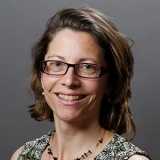
Pope Francis greets visitors as he rides the popemobile around St. Peter's Square before his weekly general audience at the Vatican June 5, 2024. (CNS photo/Lola Gomez)
VATICAN CITY (CNS) -- Pope Francis announced that he is preparing a document on the Sacred Heart of Jesus to "illuminate the path of ecclesial renewal, but also to say something significant to a world that seems to have lost its heart."
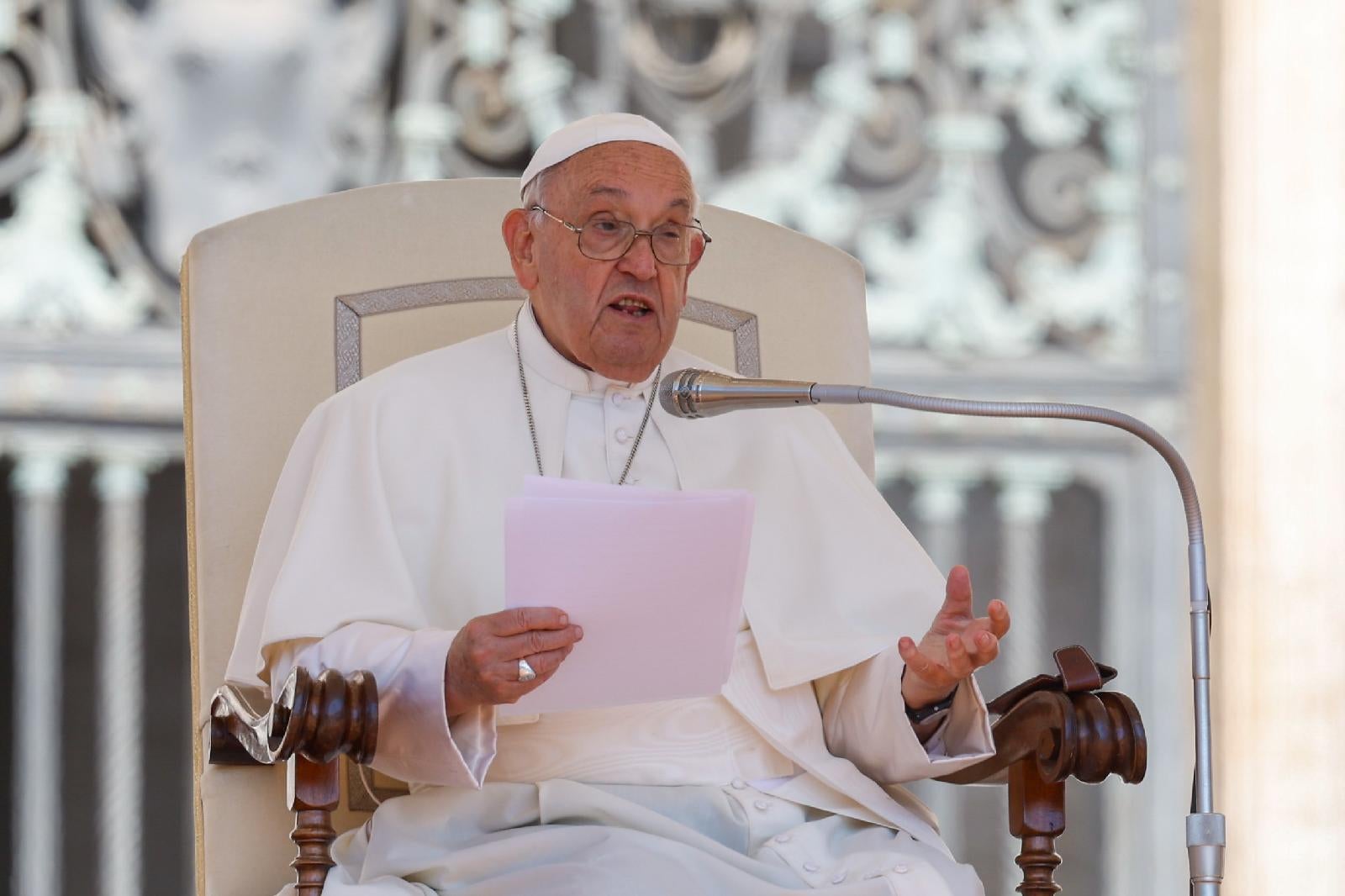
The pope made the announcement during his general audience in St. Peter's Square June 5. The Catholic Church traditionally dedicates the month of June to the Sacred Heart of Jesus and the solemnity of the Sacred Heart will be celebrated June 7 this year.
The document will include reflections from "previous magisterial texts" and it will aim to "re-propose to the whole church this devotion laden with spiritual beauty . I believe it will do us much good to meditate on various aspects of the Lord's love," the pope said.
Meanwhile, in his main audience talk, Pope Francis continued a new series on the relationship between the Holy Spirit and the church, particularly in how the Holy Spirit leads God's people to meet Jesus, the source of Christian hope.
The Biblical name of the Holy Spirit is "ruach" in Hebrew, which means breath, wind or spirit, he said.
The image of wind expresses the power of the divine Spirit, he said, and Jesus highlighted its freedom to blow and go where it wants.
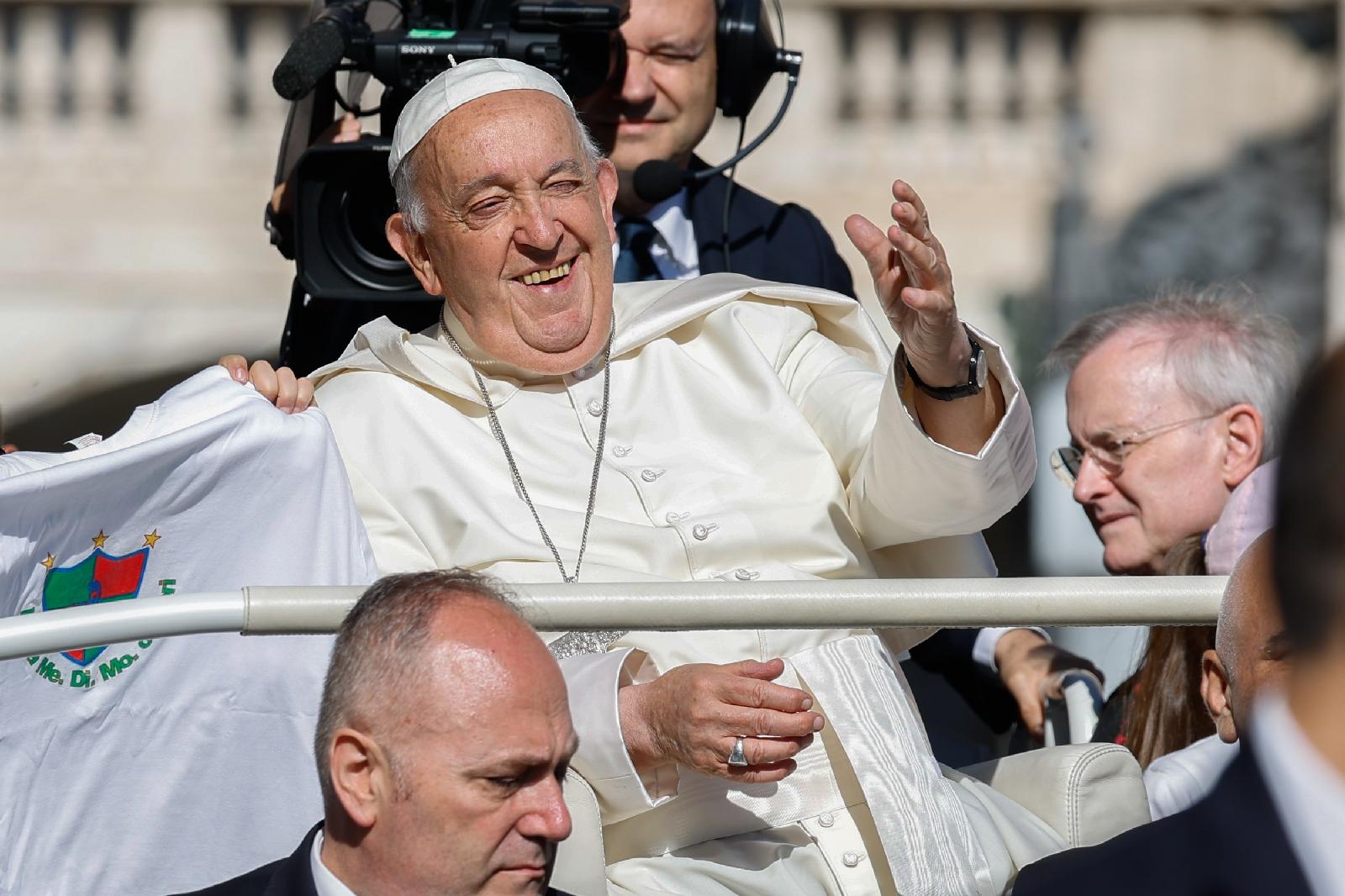
A similar temptation in the church is the attempt "to enclose the Holy Spirit in canons, institutions, definitions. The Spirit creates and animates institutions, but he himself cannot be 'institutionalized'" or turned into an object, the pope said.
The freedom Jesus offers with his Spirit is special, he said. It has nothing to do with the selfishness of being free to do what one wants, but it is "the freedom to freely do what God wants! Not freedom to do good or evil, but freedom to do good and do it freely, that is, by attraction, not compulsion. In other words, the freedom of children, not slaves."
True freedom is choosing to serve "in love and joy," he said. And it is "a commitment to grow in the truth revealed by Christ and to defend it before the world," he said in his greeting to Polish-speaking pilgrims.
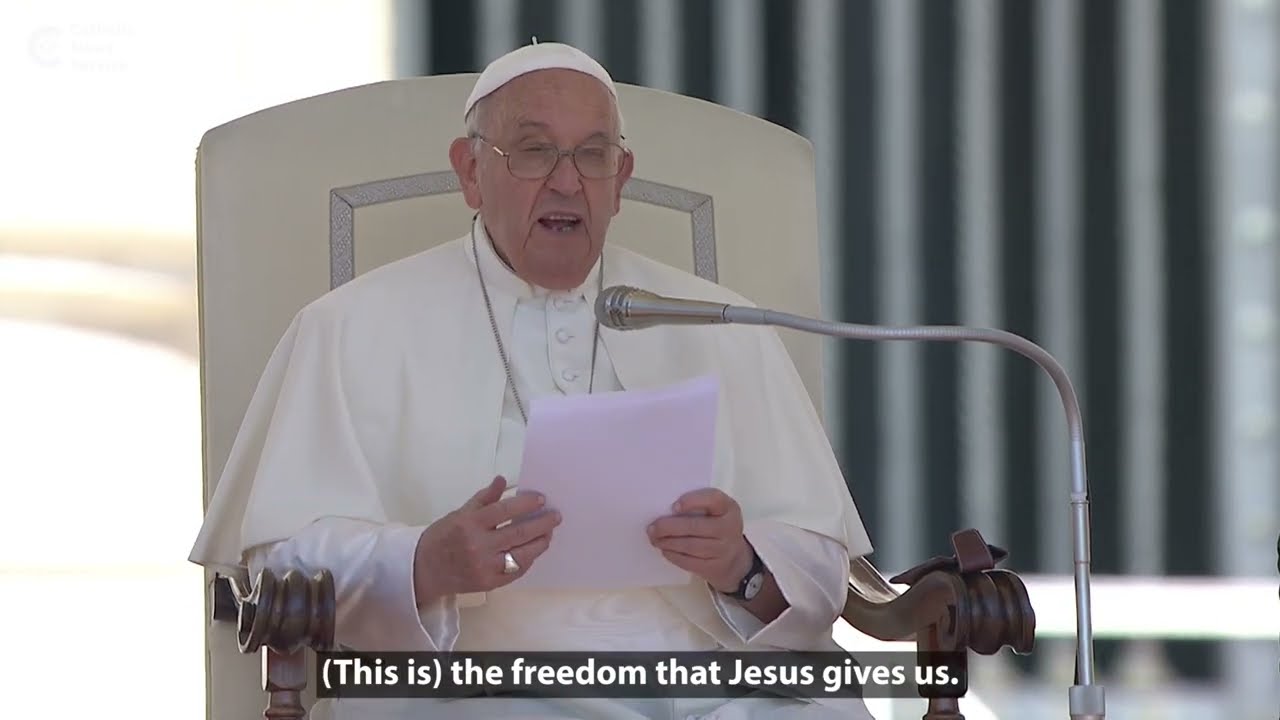
Pope: What is true freedom?
A look at Pope Francis' general audience talk June 5, 2024.
CATHOLIC NEWS SERVICE
With its Rome bureau founded in 1950, Catholic News Service has been providing complete, in-depth coverage of the popes and the Vatican for more than 70 years. CNS Rome continues to be your fair, faithful and informed connection to the Holy See.
Featured Stories
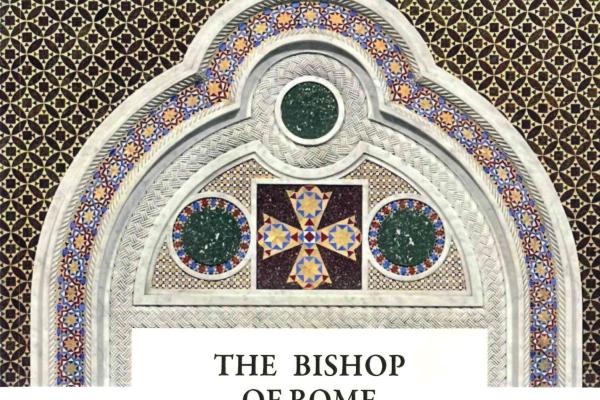
Ecumenical and Interreligious Affairs
Ecumenism and papal primacy: vatican releases status report on dialogues.
St. John Paul II called for an ecumenical discussion about the role the bishop of Rome, the pope, could play in a more united Christianity. The Vatican released an in...
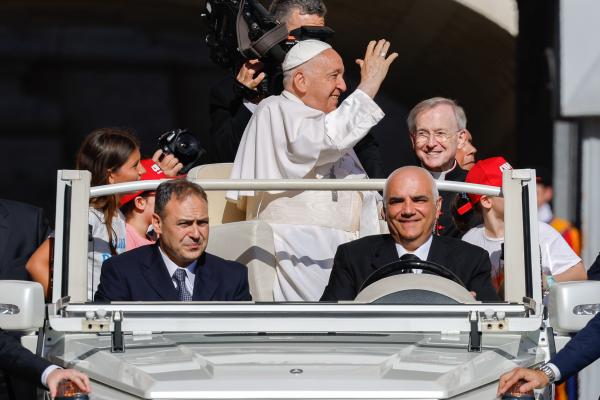
Pope Francis
Spirit and scripture combined cast light on life's problems, pope says.
Pope Francis urged Christians to read the Bible every day and advised priests to keep their homilies brief.
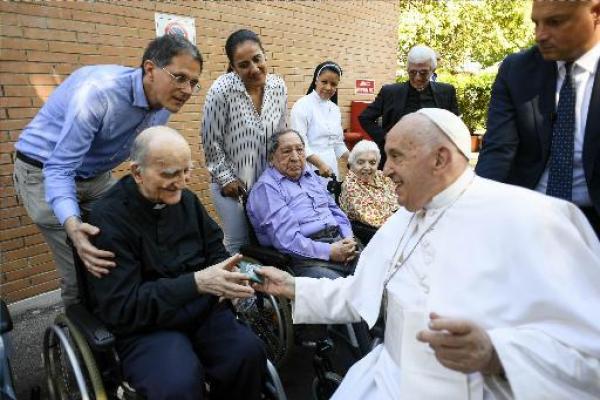
Pope encourages priests to reach out to those who are 'invisible'
During a closed-door meeting with a group of Rome's priests, Pope Francis invited them to reach out to society's "invisible" individuals and he cautioned against...

IMAGES
VIDEO
COMMENTS
USCCB Papal Visit 2015. Pope Francis visited North America— Cuba and the United States —from 19 to 27 September 2015. [1] [2] It was his first state visit to both Cuba and the U.S., [3] as well as the third official papal visit to Cuba and the seventh to the United States since the U.S. established full diplomatic relations with the Holy ...
Papal Visits to the United States. Pope Francis was the fourth pope to visit the theUnited States. His apostolic journey to the United States took place from September 22-27, 2015, and he visited Washington, New York and Philadelphia. Pope Francis' visit was the tenth time a pope made an apostolic journey to the United States.
Pope Francis sits on board his Rome-bound plane after his visit to the U.S. in Philadelphia, on Sept. 27, 2015. Charles Mostoller—Reuters. A man looks at a television screen showing Pope Francis ...
The crowded agenda of the Pope's first visit to the United States ended in Philadelphia, where he met with victims of sexual abuse, spoke to inmates and celebrated a Mass in the heart of the city. ... 2015. 3:09 pm ET Sep 27, 2015 2015-09-27T19:09:01+00:00. By Jason Horowitz. PHILADELPHIA. Awaiting Final Mass, Pope's Message Resonates.
Pope Francis made his first visit to the United States in September 2015, meeting followers and dignitaries in Washington, New York and Philadelphia. Explore the full coverage from The Times.
Pope Francis announces 2015 visit to US Pope Francis greets pilgrims in St. Peter's Square during the Wednesday general audience on May 28, 2014. | Daniel Ibáñez/CNA. Vatican City, Nov 17, 2014 ...
Here is the schedule for Pope Francis' September 2015 Apostolic Journey to the United States of America as released by the Vatican on June 30, 2015. All times listed are Eastern Daylight Time. TUESDAY, SEPTEMBER 22 (WASHINGTON, DC) 4:00 p.m. Arrival from Cuba at Joint Base Andrews WEDNESDAY, SEPTEMBER 23 (WASHINGTON, DC)
Pope Francis' Visit to America, in Pictures SEPT. 23, 2015 During the pope's first trip to the United States, Catholics and non-Catholics alike navigate crowds in three cities to catch a ...
The United States Conference of Catholic Bishops' (USCCB's) mission is to encounter the mercy of Christ and to accompany His people with joy. Video highlights of Pope Francis' visit to the U.S. in 2015....
Stephen Crowley/The New York Times. The most recent time a pope visited Washington, he was celebrating his birthday. President George W. Bush had invited the newly 81-year-old Benedict XVI to the White House, where he was greeted on the South Lawn on a bright blue April morning in 2008 by a crowd of 13,500 people.
apostolic journey of his holiness pope francis to cuba, to the united states of america and visit to the united nations headquarters (19-28 september 2015) visit to the joint session of the united states congress. address of the holy father . united states capitol, washington, d.c. thursday, 24 september 2015
The White House prepares to welcome Pope Francis at the largest arrival ceremony that the Obama administration has held. President Obama delivers remarks welcoming His Holiness Pope Francis to the White House during the Pope's first visit to the United States. September 23, 2015.
The Pope is in the United States for six days, visiting Washington, New York and Philadelphia. ... 2015 Link Copied! ... The Pope has been on a six-day visit to the United States, with stops in ...
Pope Francis traveled to the United States Sept. 22-28, 2015, ... Pope's visit made Catholics feel proud of our church again. By Peter Daly. Oct 05, 2015. Pope Francis: Catholic superhero.
By Laurie Goodstein. Sept. 5, 2015. During his first private meeting with Pope Francis in the Vatican two years ago, Cardinal Timothy M. Dolan said, the pope took out an atlas with a map of the ...
Pope Francis waves to the crowd at Philadelphia International Airport in Philadelphia as he departs for Rome on Sunday, Sept. 27, 2015. Pope Francis wrapped up his 10-day trip to Cuba and the ...
22 photos that show the intense excitement surrounding Pope Francis' first-ever visit to the US. Sarah Jacobs and Jack Sommer. Sep 25, 2015, 12:50 PM PDT. Pope Francis waves from his "popemobile ...
Here's a look back at 50 years of pope visits to the U.S.: President John F. Kennedy meets with Pope Paul VI at the Vatican. Pope Paul VI talks to U.S. President Lyndon B. Johnson during a visit to New York on October 8th 1965. Pope John Paul II gestures to the crowd during his trip to the United States, on Oct. 6, 1979.
The United States Department of Transportation (USDOT) Emergency Response Team (ERT) has established the Papal Visit Task Force (PVTF) to coordinate intermodal activities related to Pope Francis's three-stop visit within the United States in September 2015. The PVTF is comprised of representatives from USDOT's Operating Administrations and ...
In 1979, Pope John Paul II came to the United States and became the first Pope to visit the White House. Pope John Paul II visited the United States a total seven of times. President Jimmy Carter's handwritten notes on meeting with Pope John Paul II during his first visit to the White House, October 6, 1979. (National Archives Identifier 6207614)
Pope John Paul II. With five official visits to the United States and two stopovers in Alaska, John Paul II visited the country more than any other Holy Father. "He was very much a pope on a ...
Stephen Colbert, Jim Gaffigan, Conan O'Brien, Chris Rock, Whoopi Goldberg and Tig Notaro are also on the Pope's guest list for the Vatican fun-fest.
Share this Entry. (ZENIT News / Rome, 06.10.2024).-. On the morning of Monday, June 10, Pope Francis embarked on a notable visit to Campidoglio, the historic seat of Rome's city government ...
80 years after historic meeting with Pope, Irish Regiment returns to the Vatican. 12/06/2024.
Pope proclaims Jubilee: 'May hope fill our days!'. Pope Francis crossed the River Tiber on Monday morning after having accepted the Mayor of Rome's invitation to visit the Capitoline Assembly as the city gears up to host the 2025 Jubilee Year. During his discourse to the Mayor and his administration, the Pope expressed gratitude for the ...
By EMILY S. RUEB SEPT. 18, 2015. Photo Pope Benedict XVI at Yankee Stadium in 2008. ... On his fourth visit to the United States, Pope John Paul II returned to New York after a 16-year absence ...
ROME - Pope Francis on Tuesday reiterated his opposition to gay priests, allegedly repeating a highly pejorative slur in an encounter with clerics just two weeks after the Vatican issued an ...
Pope Francis greets Rome's Mayor Roberto Gualtieri during the pope's visit to Rome's City Hall June 10, 2024. ... to keep your account secure and make sure you're able to receive email from us.
ROME (AP) — Pope Francis gathered the Israeli and Palestinian ambassadors to the Vatican Gardens on Friday to pray for an end to the war in Gaza, marking the 10th anniversary of a similar encounter with the Israeli and Palestinian presidents with a new appeal for peace. "Every day I pray that this war will finally end," Francis told the small gathering, which included around two-dozen ...
Pope Francis announced a new document on the Sacred Heart of Jesus, set for release in September, to mark the 350th anniversary of the first apparition of the Sacred Heart of Jesus to St. Margaret Mary Alacoque. Carol Glatz. June 5, 2024. Pope Francis greets visitors as he rides the popemobile around St. Peter's Square before his weekly general ...